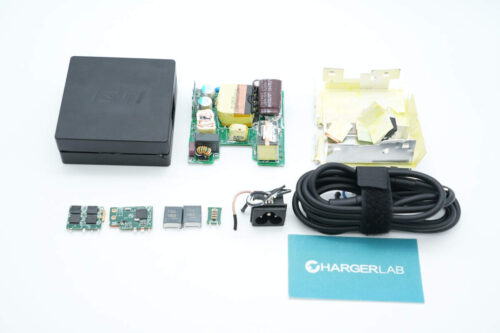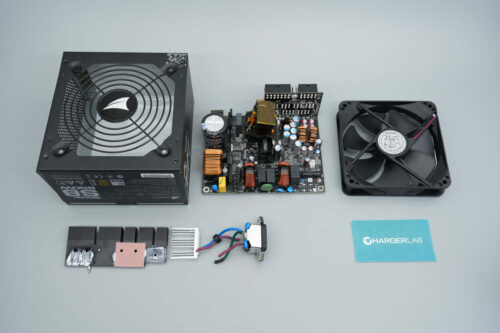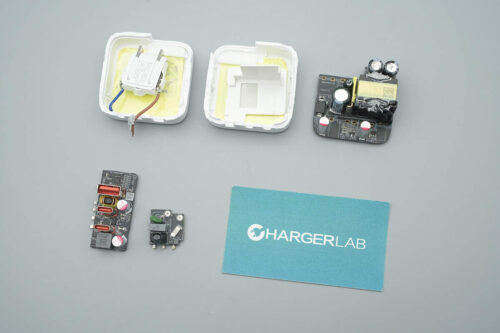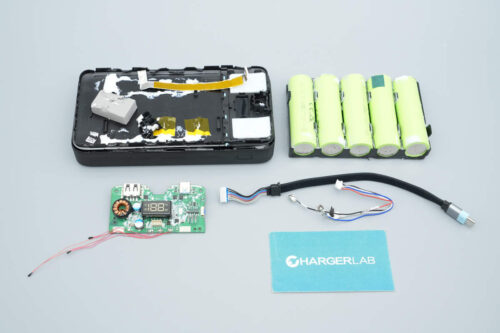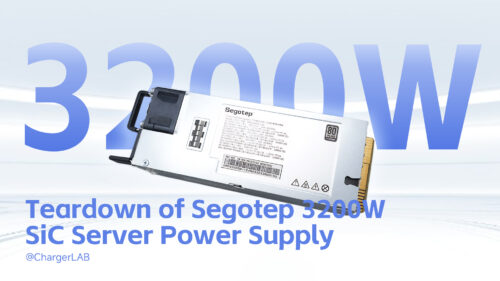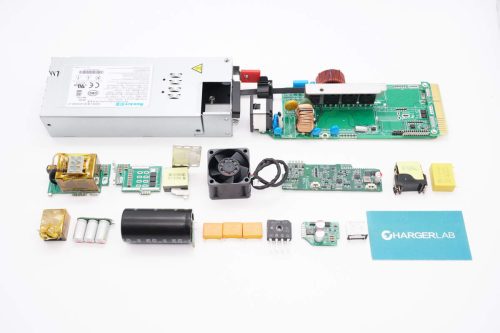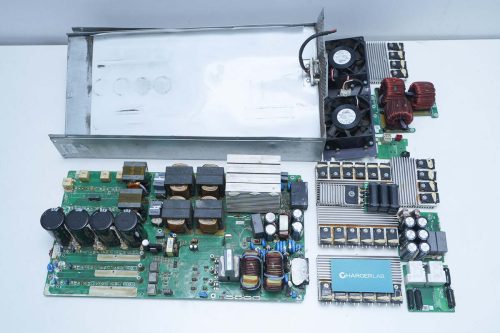Introduction
This episode features a teardown of MSI’s 140W USB-C power adapter, manufactured by Delta Electronics. The adapter comes with an integrated USB-C output cable and a detachable AC input cord, making it suitable for use in various countries and regions.
It supports the USB Power Delivery 3.1 standard with a maximum output of 28V at 5A, delivering up to 140W of power. The 1.6-meter USB-C cable enables high-power charging across a wide range of usage scenarios, especially for laptops and other high-consumption devices. Next, we’ll take a closer look at its internal design and components.
Product Appearance
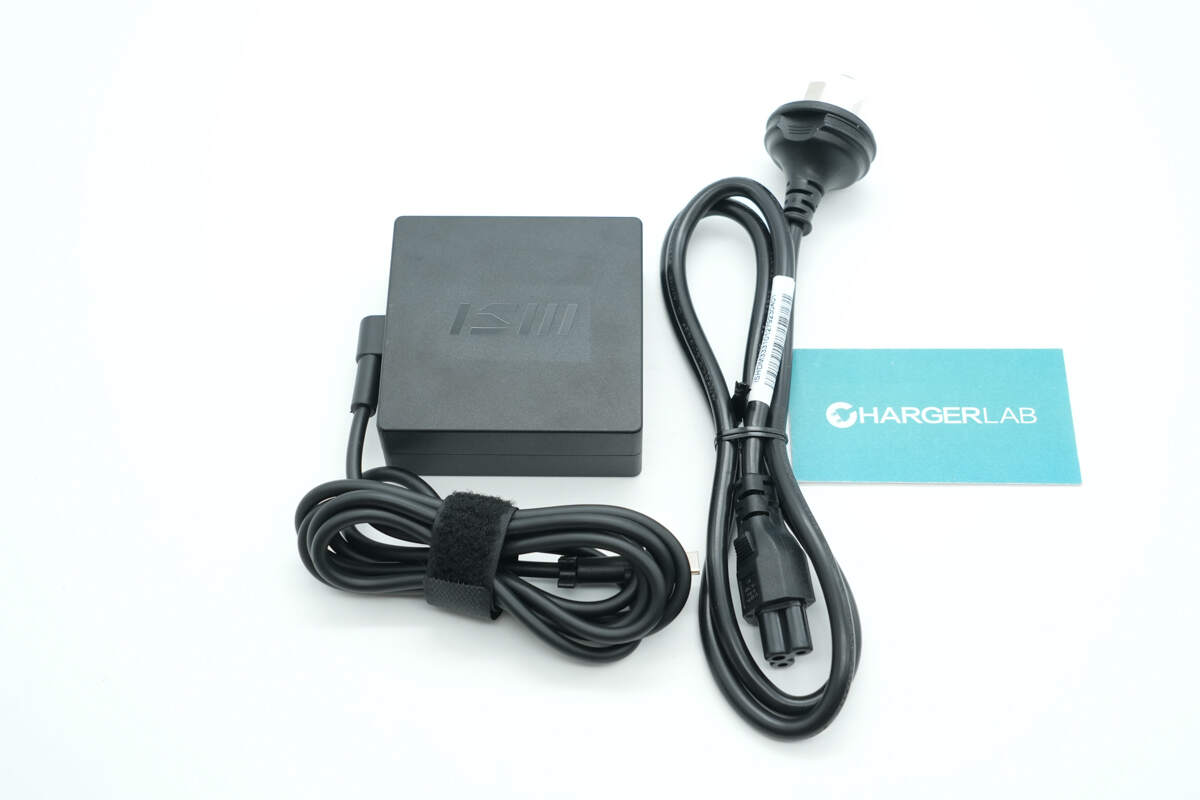
It features a built-in USB-C output cable and a detachable AC input cord.
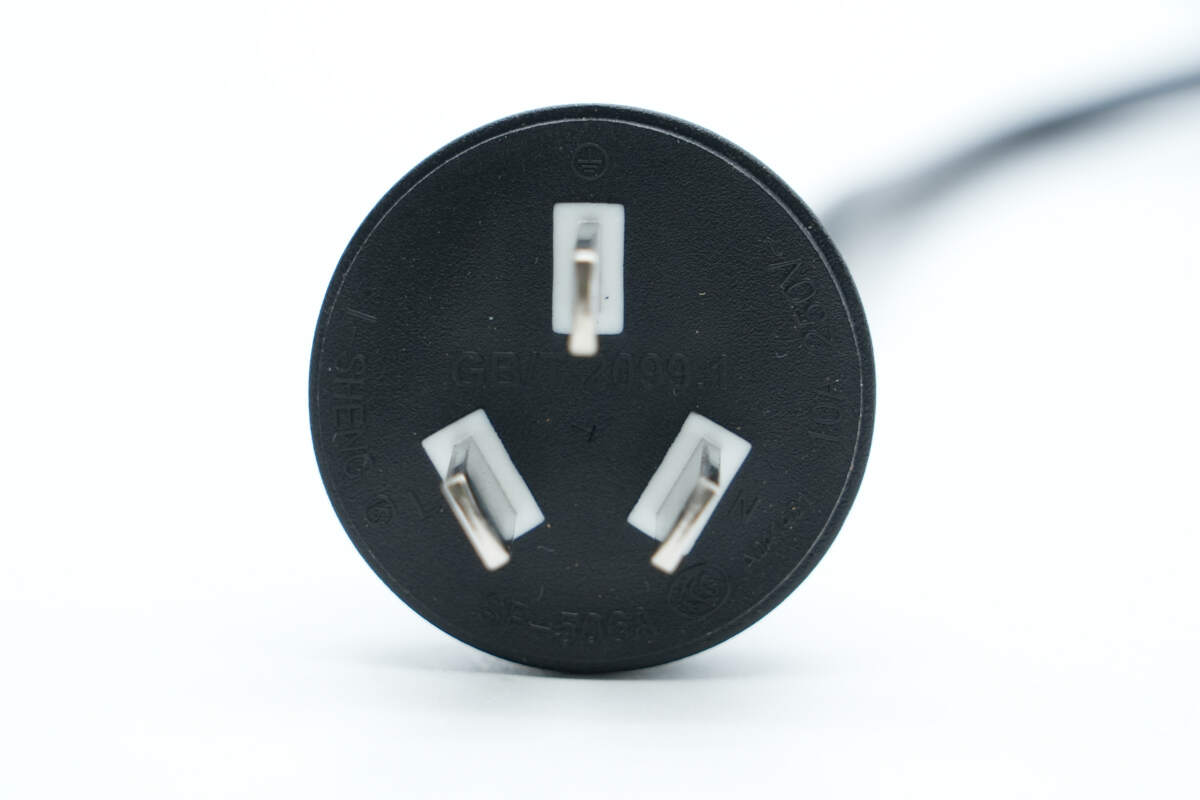
One end of the power cord features a three-prong plug rated at 10A 250V\~ and is CCC certified.
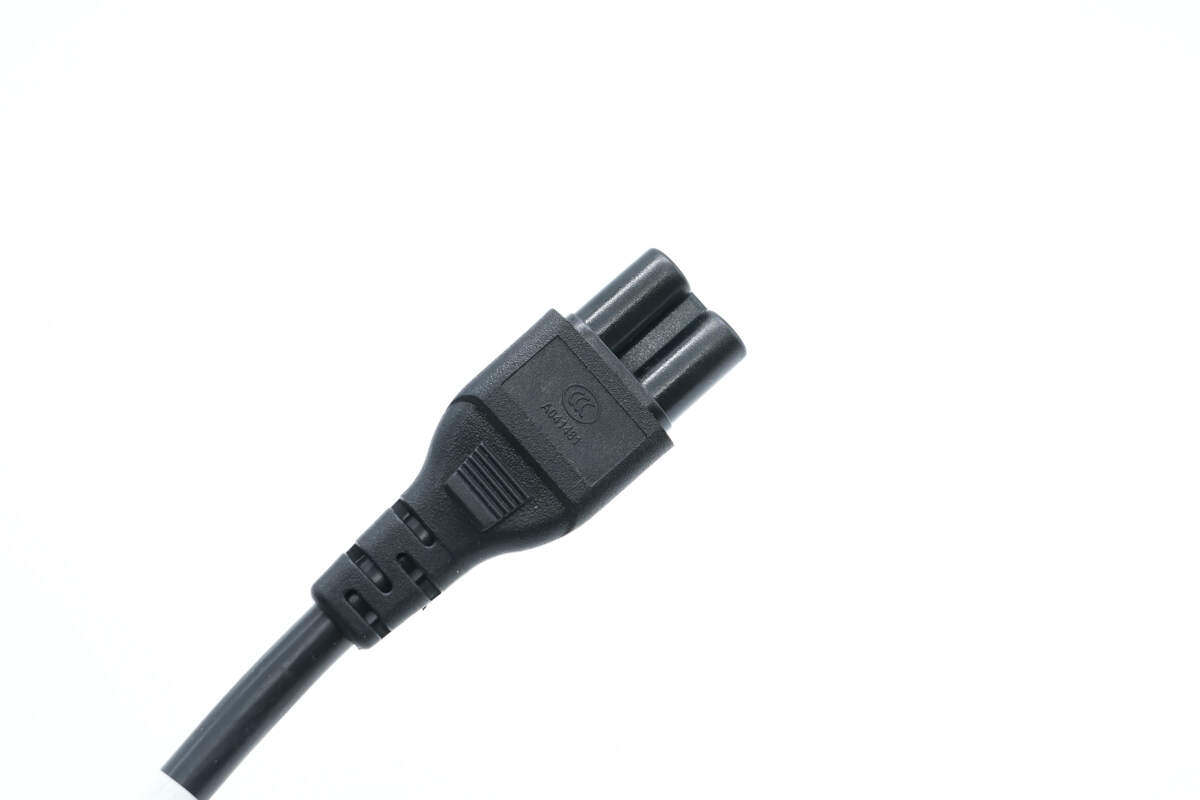
The other end uses a C5 connector with a strain relief design.
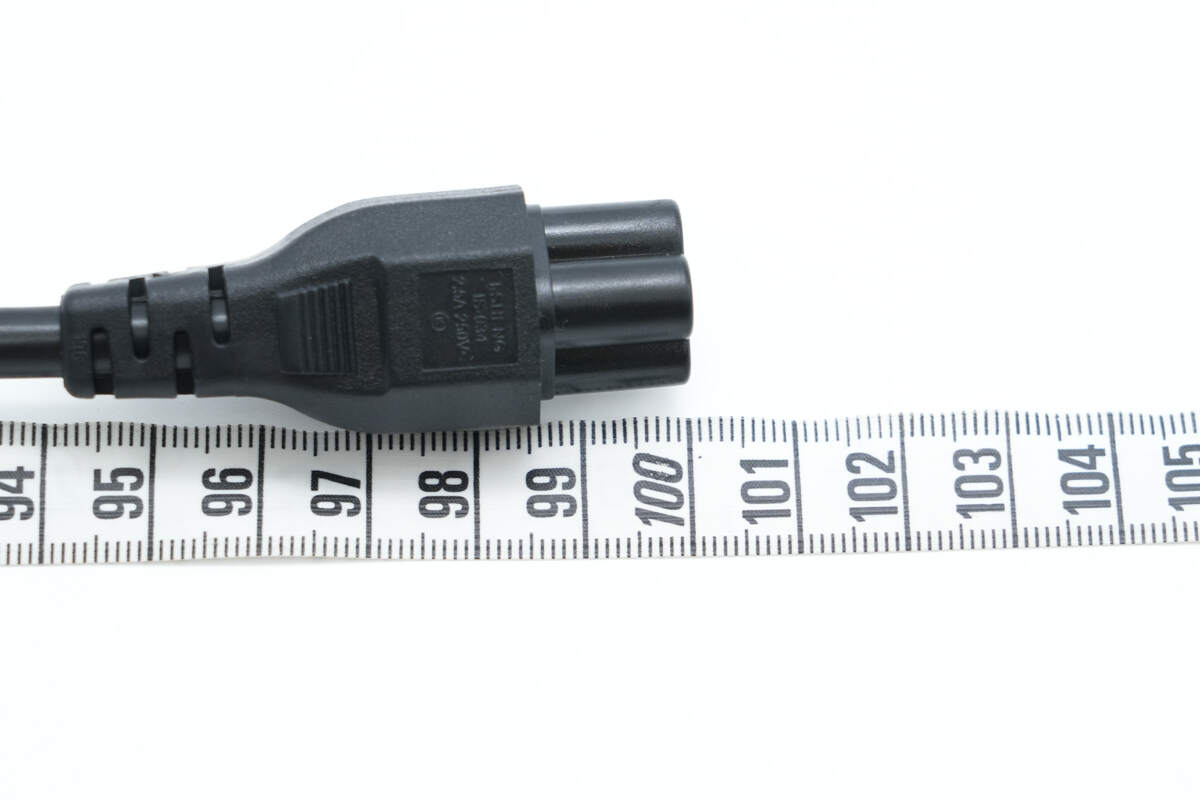
The length of the power cord is about 100 cm (39.37 inches).
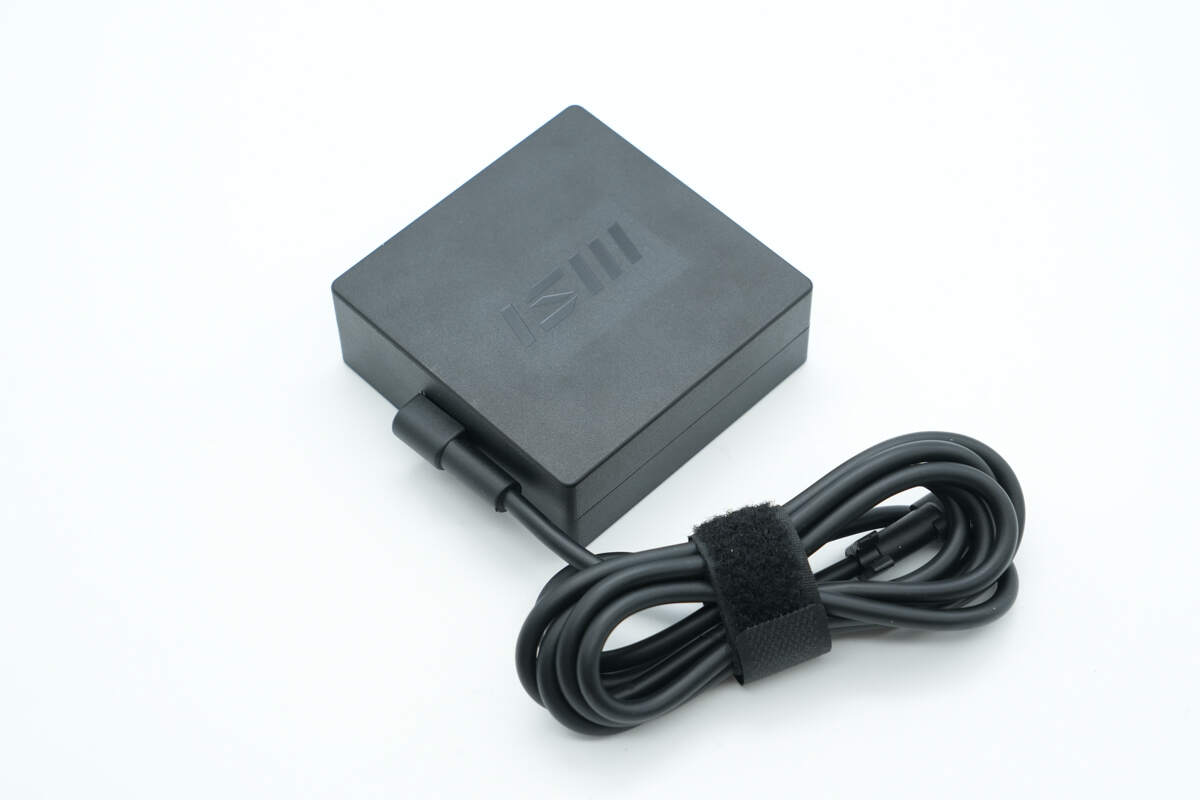
The housing is made of flame-retardant PC material, featuring sharp edges and a matte finish.

The top surface features the MSI logo.

A label plate is attached to the bottom.
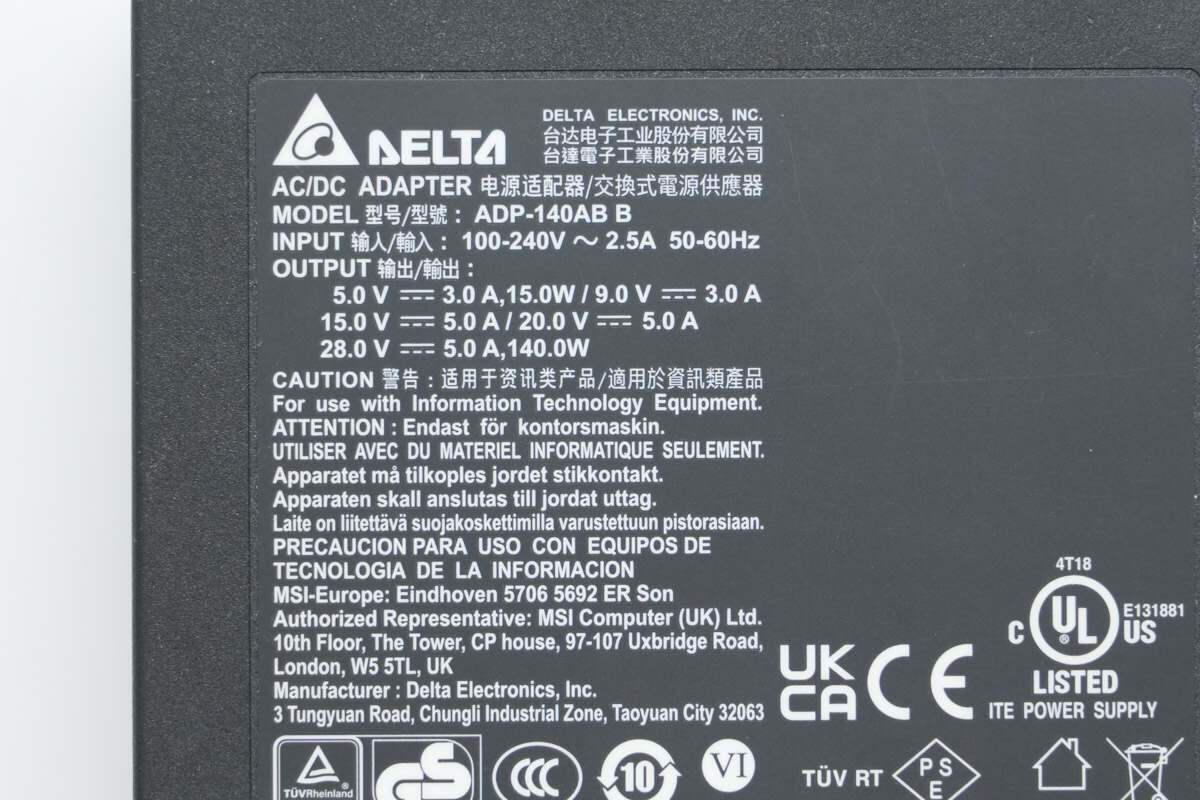
Model: ADP-140AB B
Input: 100-240V\~ 50/60Hz 2.5A
Output: 5V 3A, 9V 3A, 15V 5A, 20V 5A, 28V 5A
The product has obtained certifications including CCC, CE, UKCA, PSE, GS, UL, and has also passed the VI-level energy efficiency certification.

The input end uses a C5 connector.

The connection between the output cable and the adapter features a bend and reinforced protection.
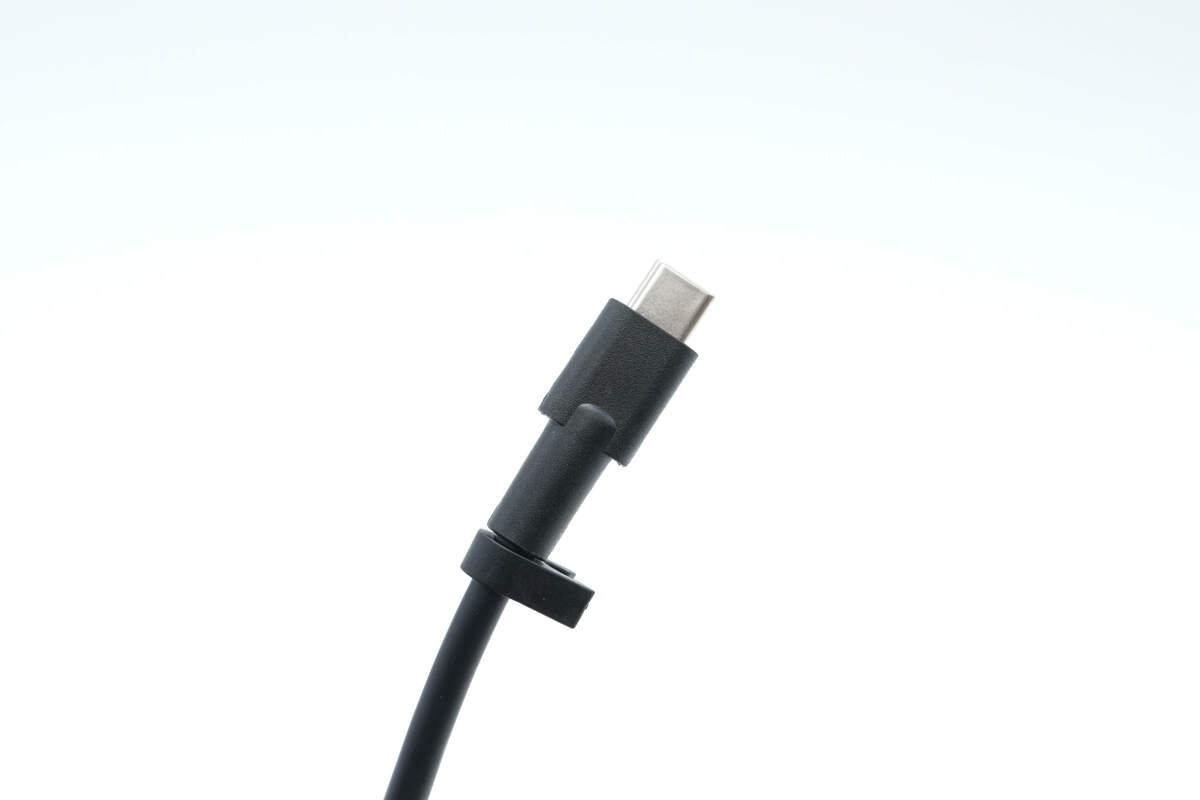
The USB-C connector housing has a matte finish and includes a cable management latch.
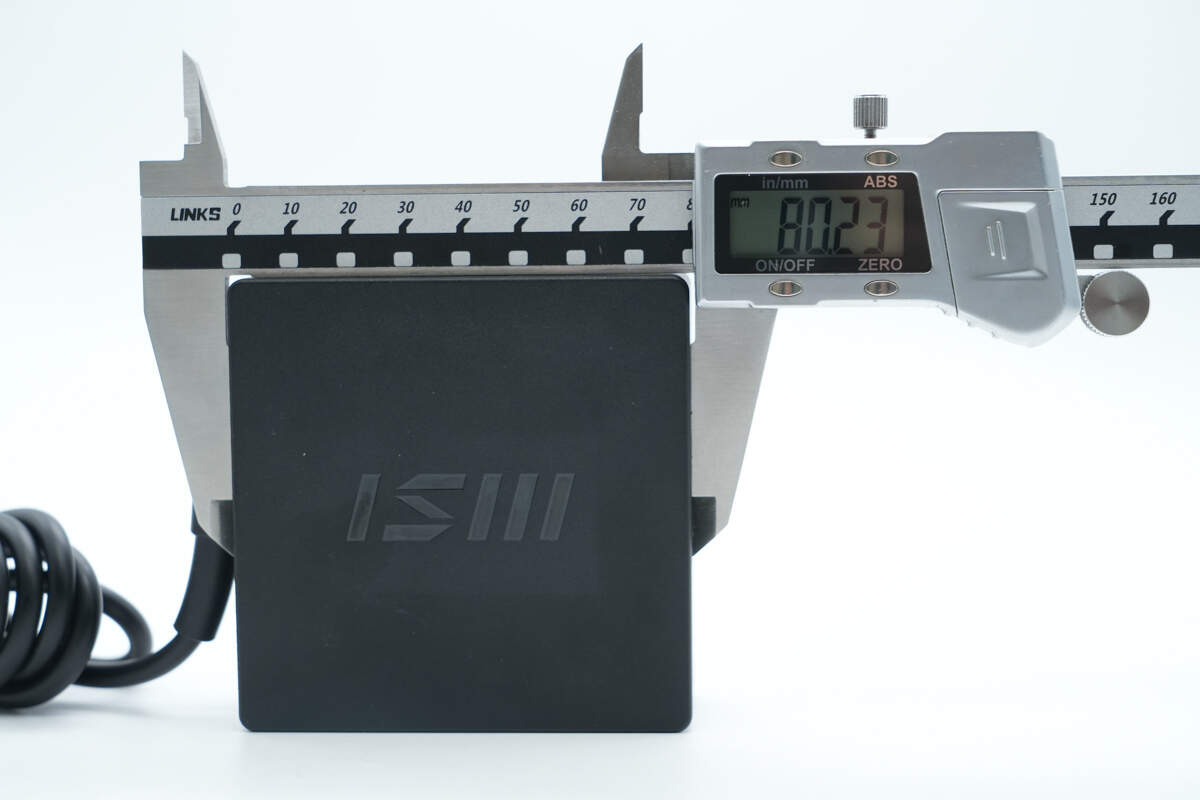
The height of the adapter is about 80.23 mm (3.16 inches).
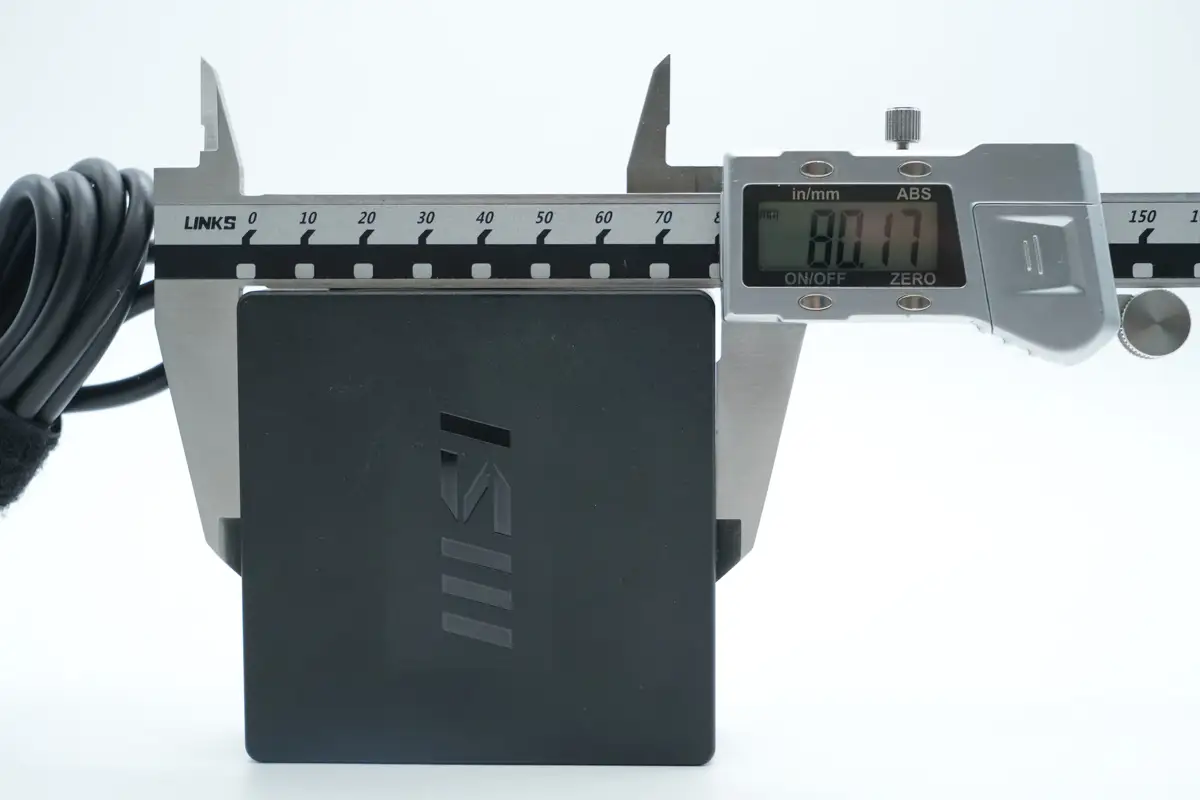
The width is about 80.17 mm (3.16 inches).
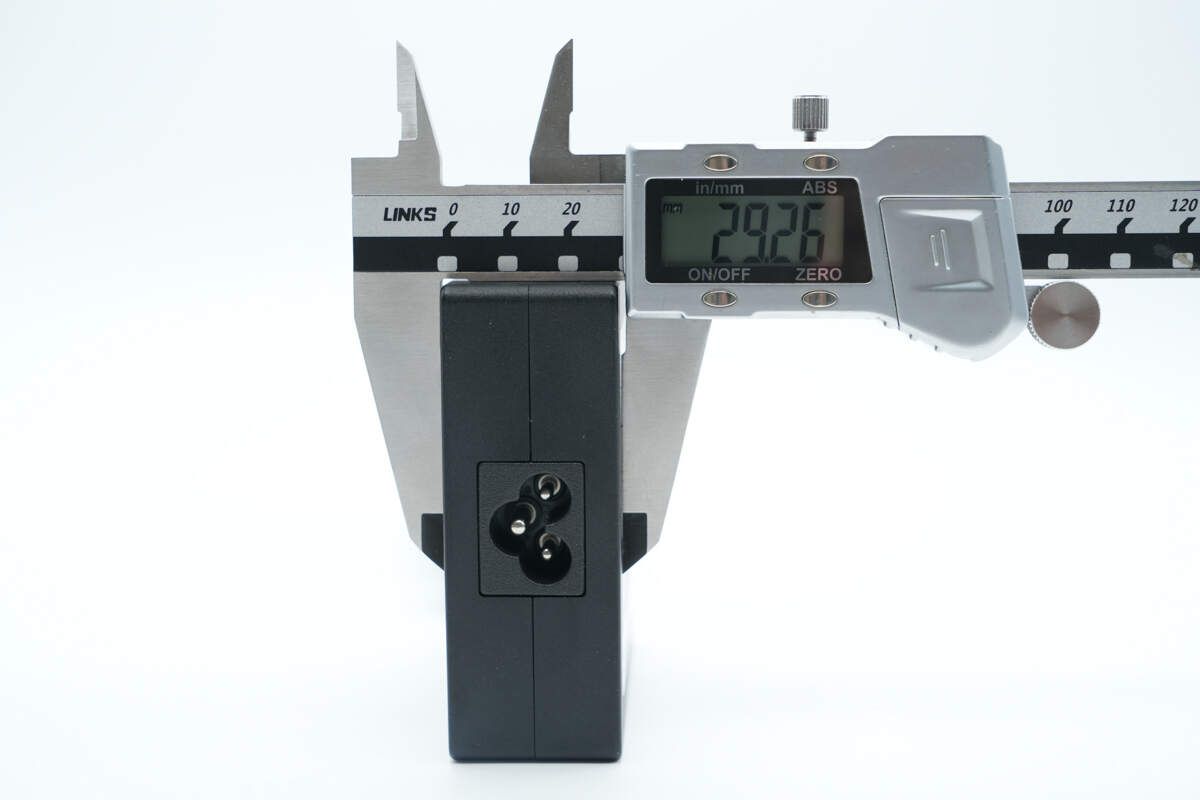
The thickness is about 29.26 mm (1.15 inches).
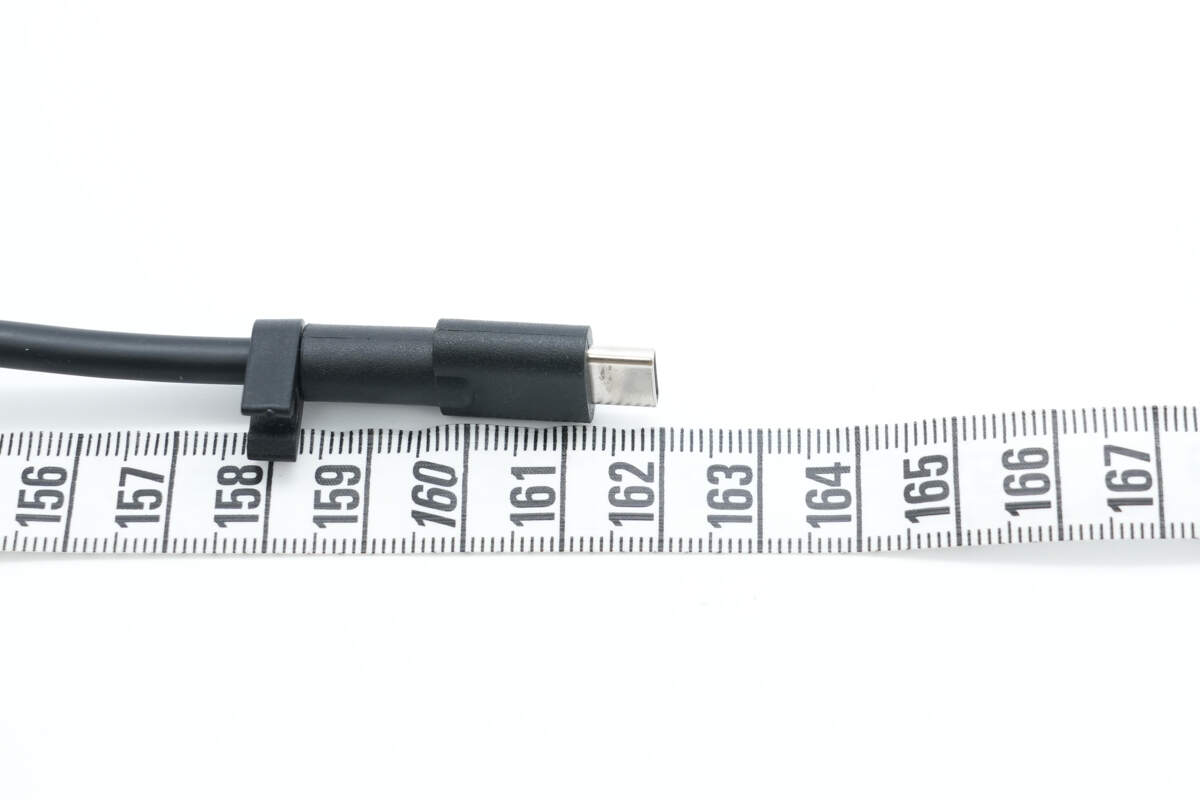
The length of the USB-C cable is about 162 cm (63.78 inches).
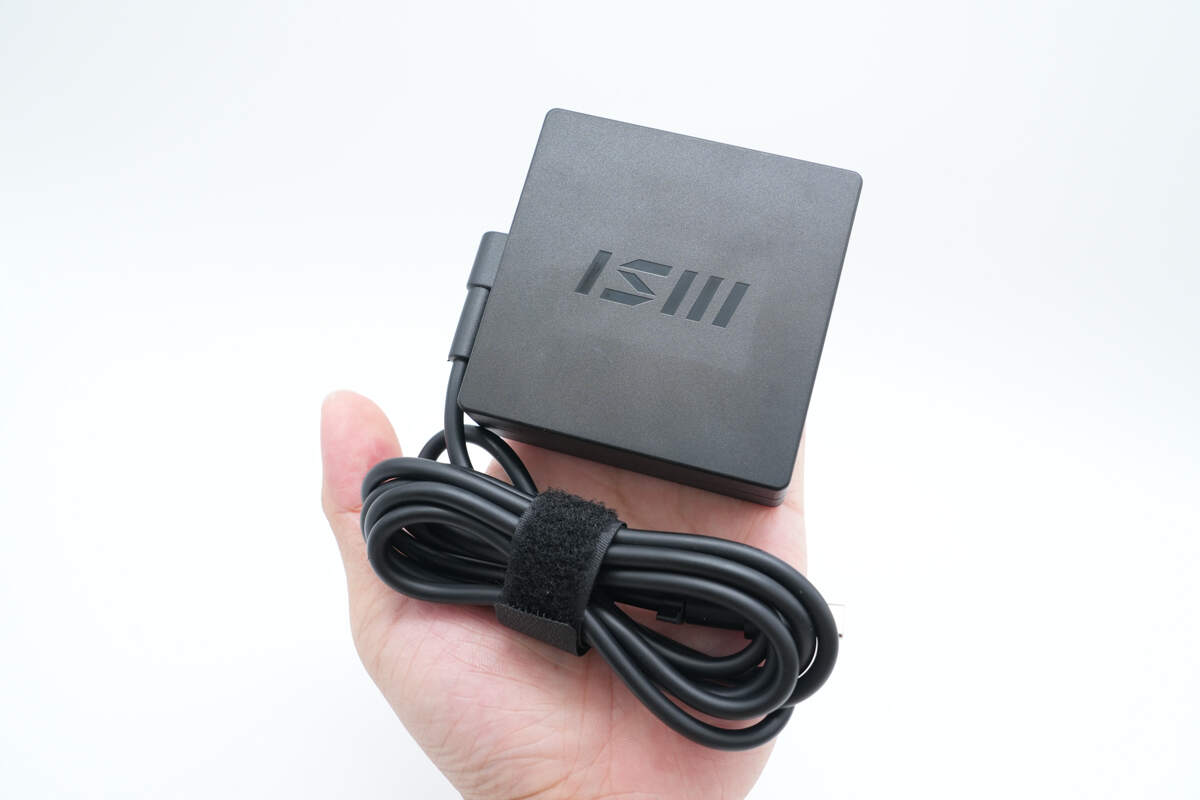
That's how big it is in the hand.
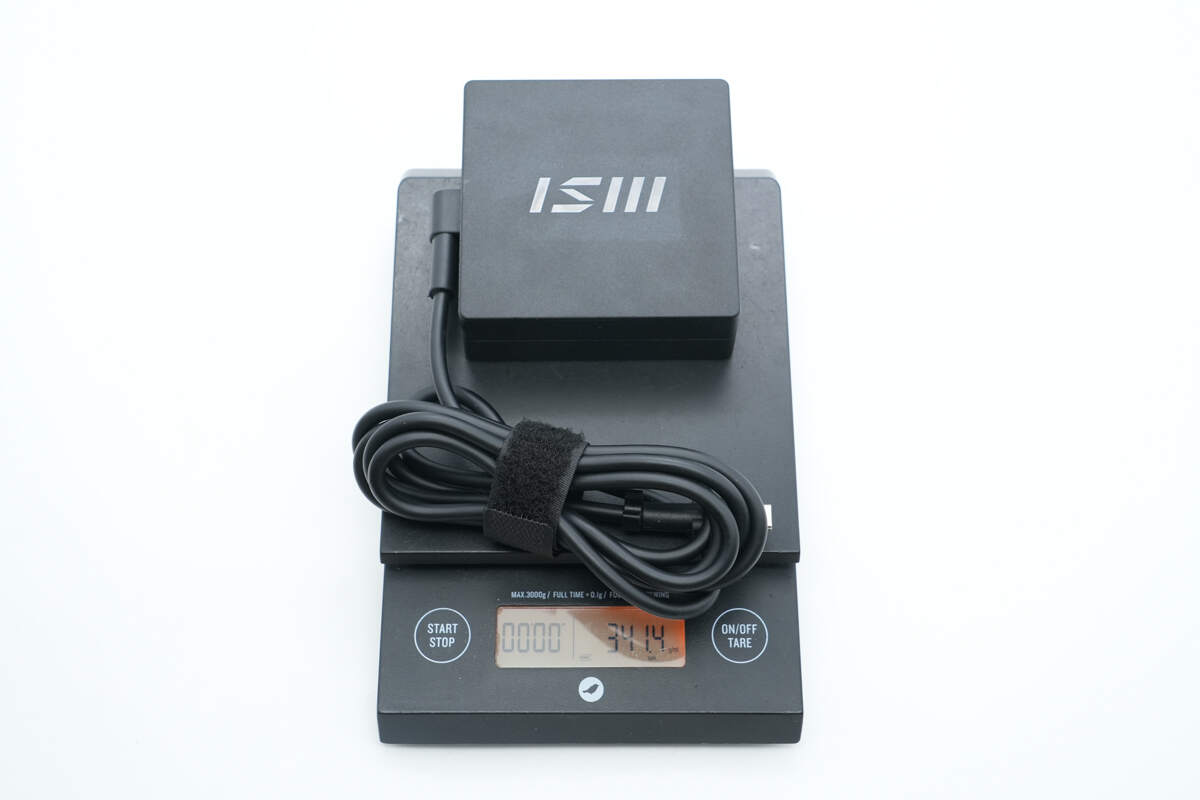
The weight is about 341 g (12.028 oz).
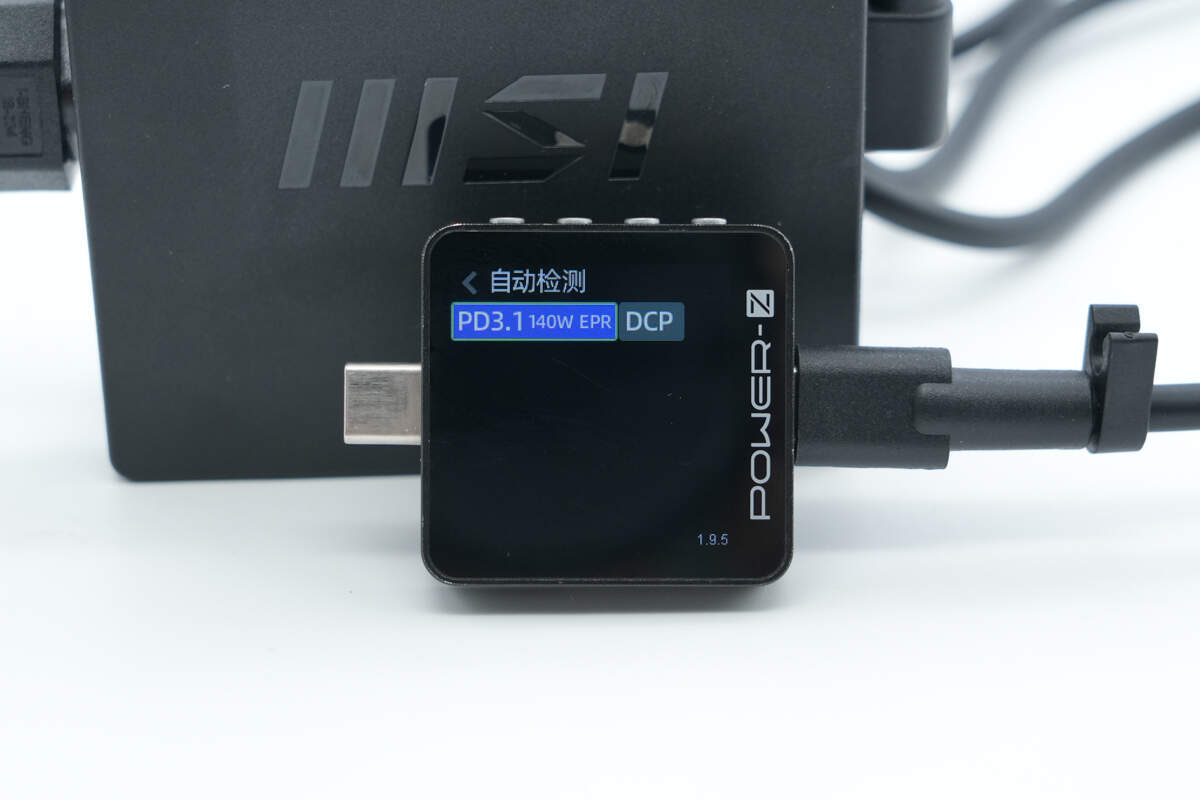
ChargerLAB POWER-Z KM003C shows that the USB-C cable supports PD3.1 and DCP charging protocols.

And it has five fixed PDOs of 5V3A, 9V3A, 15V3A, 20V5A, and 28V5A. It has one set of AVS, which is 15-28V 140W.
Teardown
Next, let's take it apart to see its internal components and structure.

Opening the enclosure along the seam reveals the PCBA module, which is wrapped in an aluminum sheet for heat dissipation.

The output cable uses crimped terminals that are soldered to the PCB.
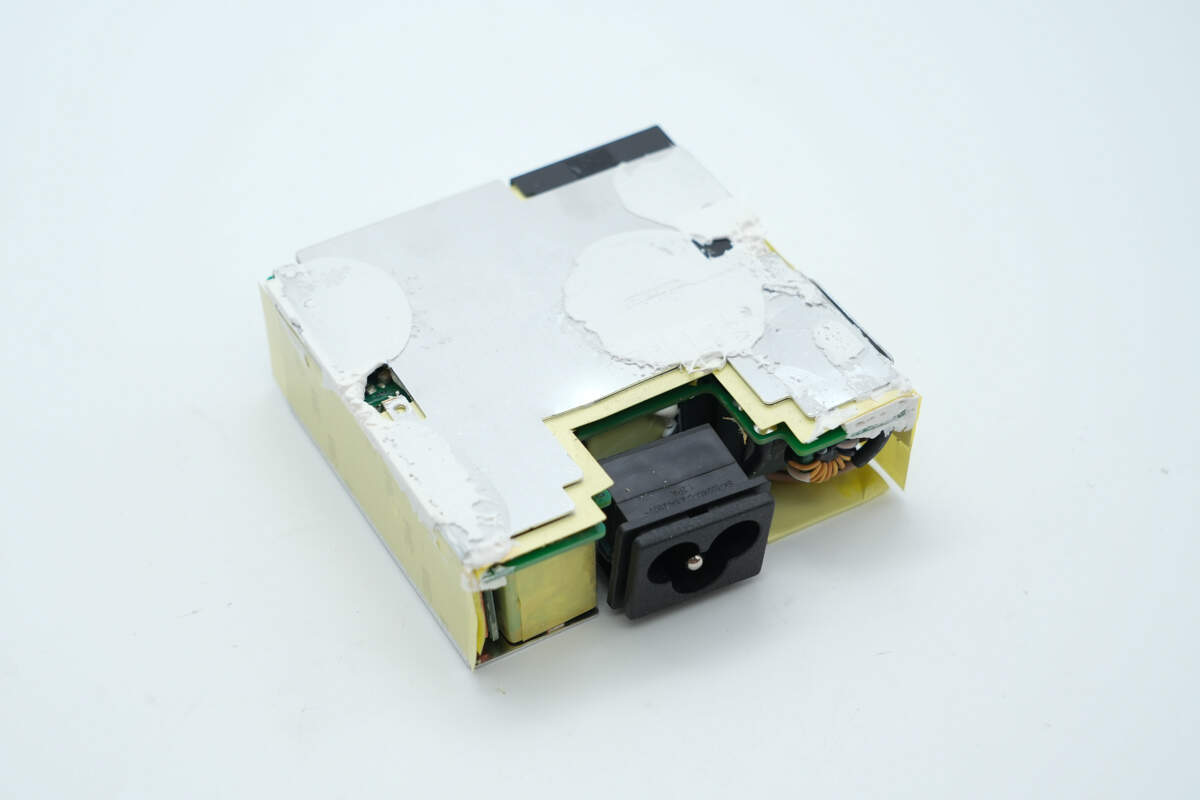
Thermal adhesive is applied to the heatsink for reinforcement.

The length of the PCBA module is about 74.68 mm (2.94 inches).
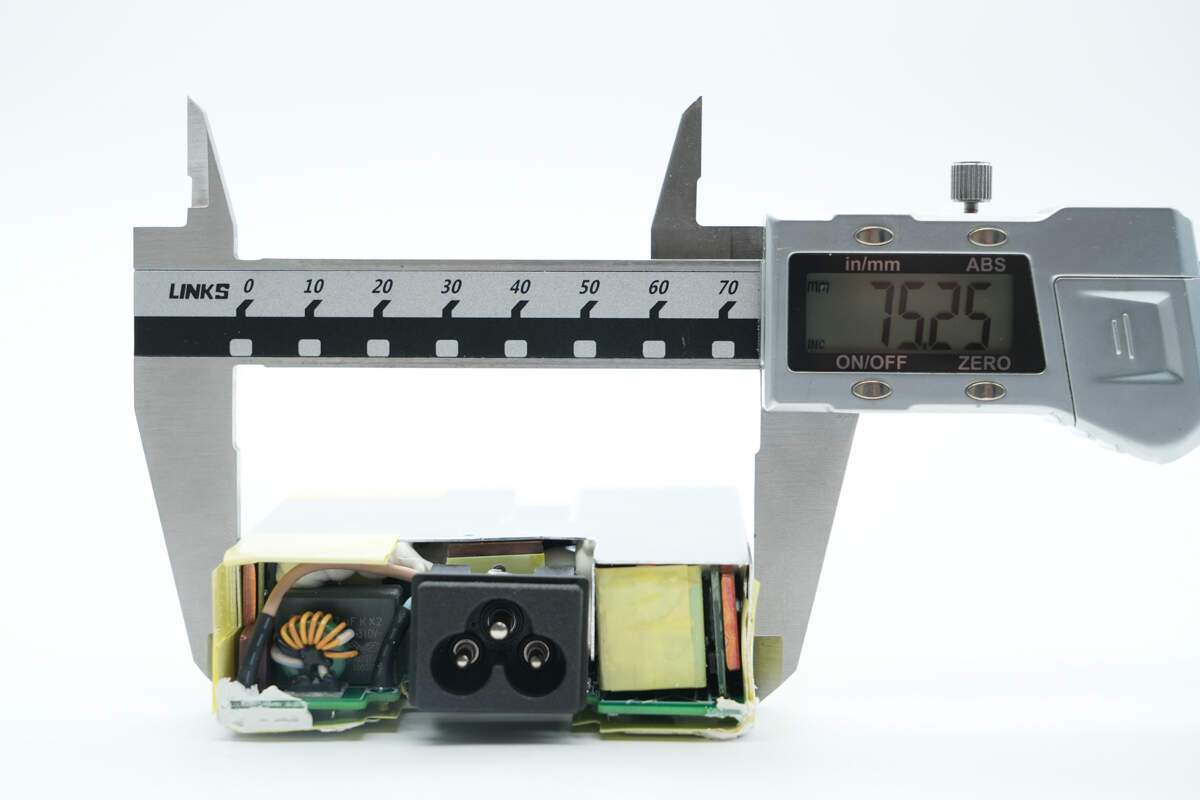
The width is about 75.25 mm (2.96 inches).

The thickness is about 25.11 mm (0.99 inches).
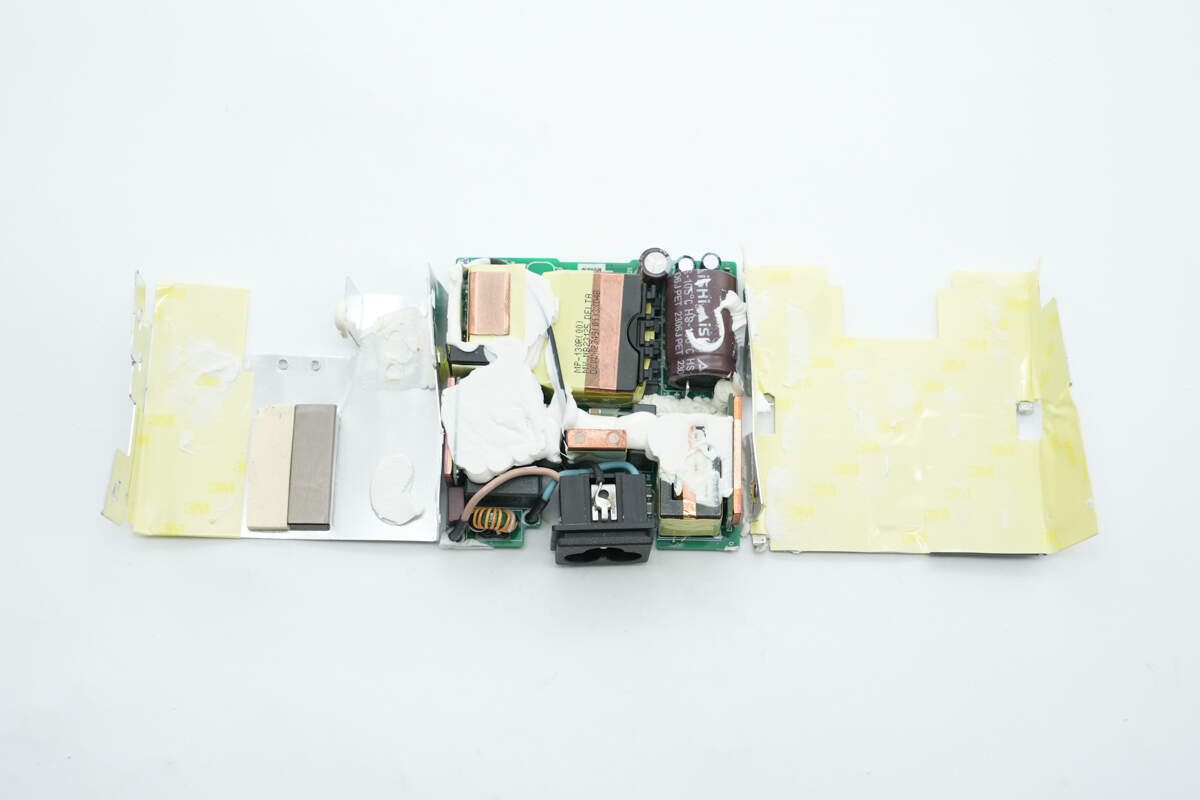
After removing the heatsink, insulation tape, and conductive fabric are found on the inner side.

There are PCBs on both sides of the module with copper plates to aid heat dissipation. Components are secured with white adhesive.
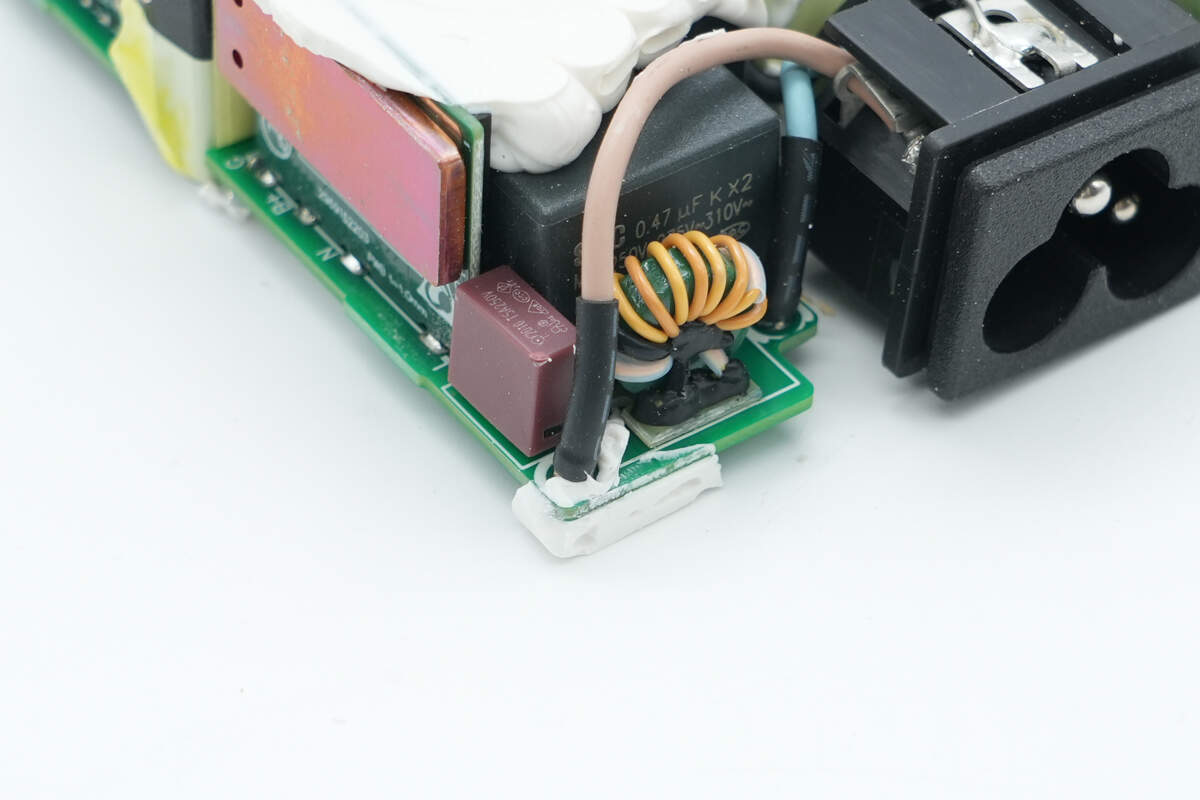
The input cable is also crimped and soldered onto the PCB, with heat shrink tubing for insulation.
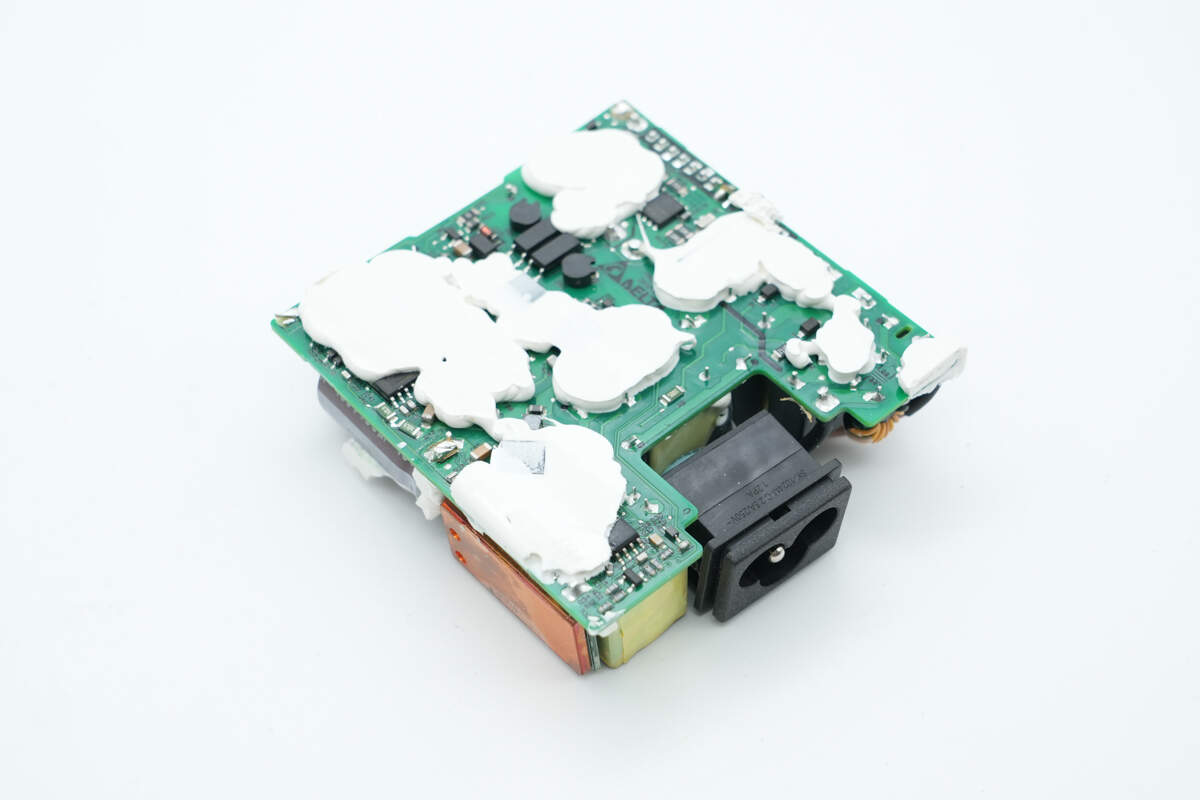
The back side of the PCBA module, corresponding to the area of the core components, is also reinforced with white adhesive.
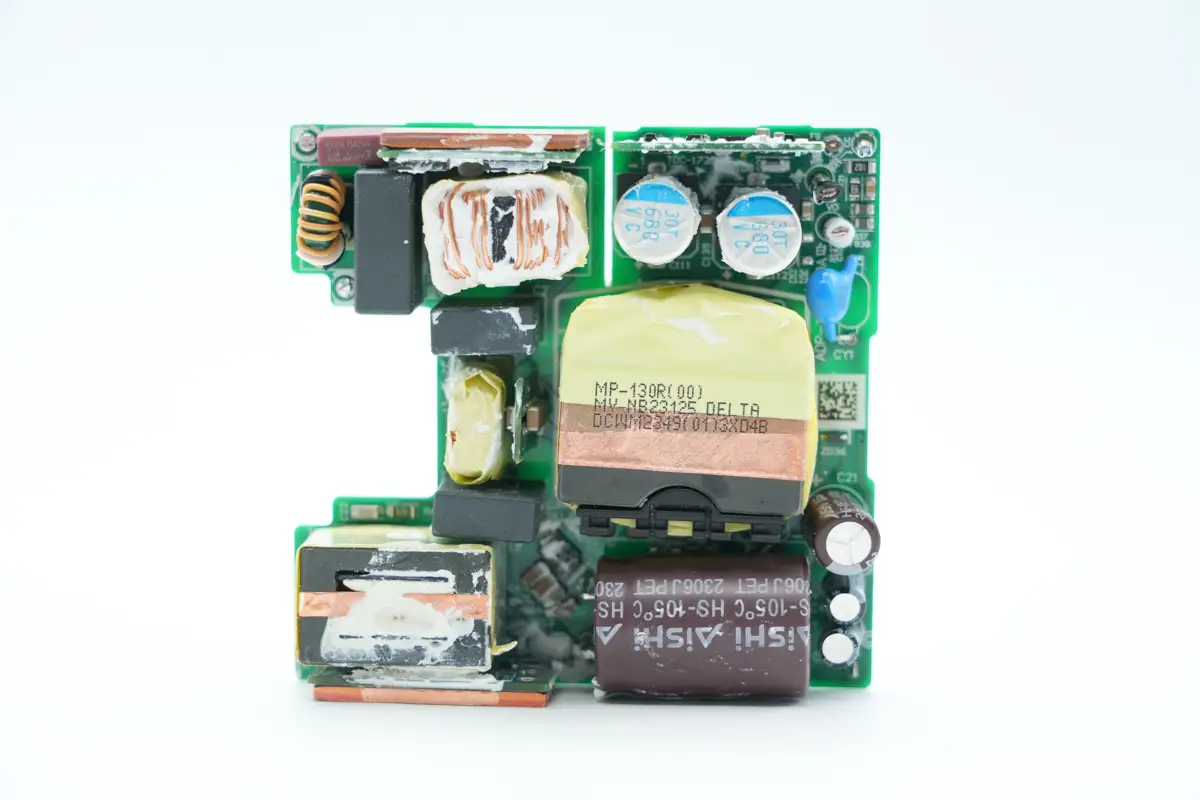
Clean off the white adhesive. The front side of the PCBA module features components such as a time-delay fuse, common mode chokes, film capacitors, filter inductors, and a PFC boost inductor. The transformer is located at the center.
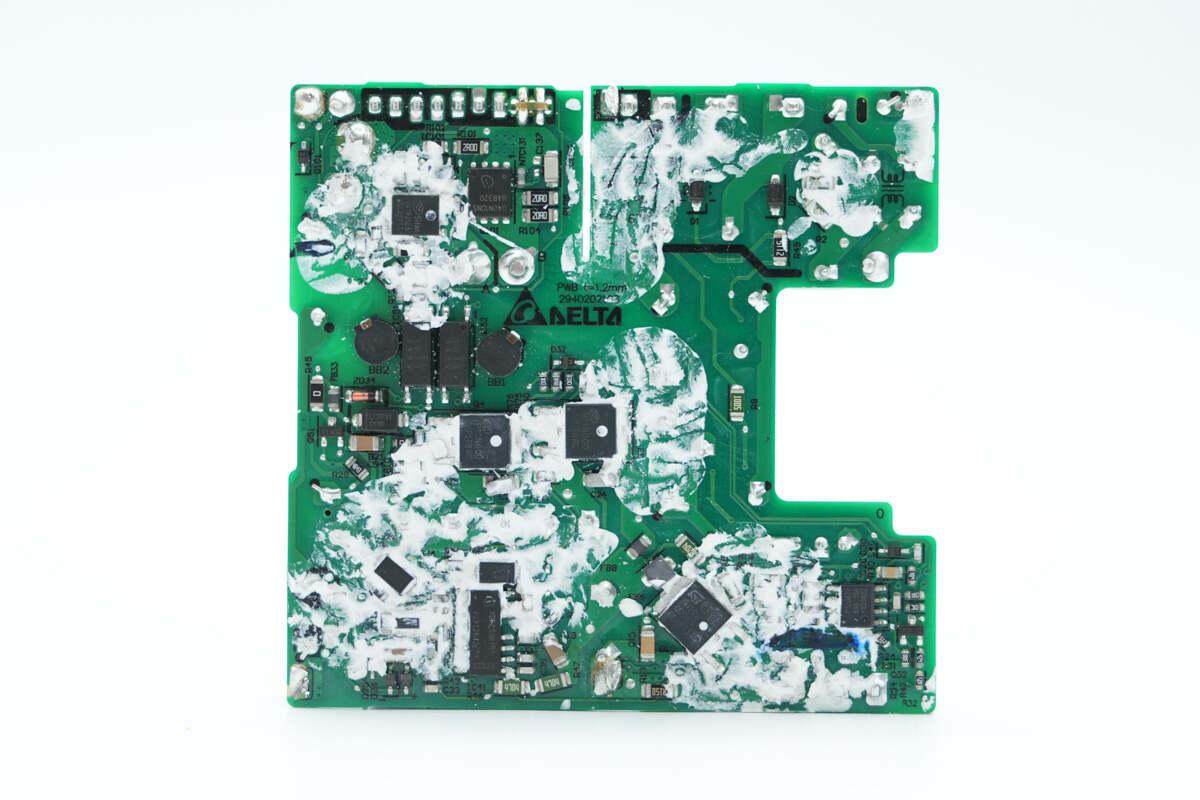
On the back side, there are the PFC controller, PFC rectifier, master control chip, HFB half-bridge MOSFETs, optocouplers, synchronous rectifier controller, synchronous rectifier, and output VBUS MOSFET.
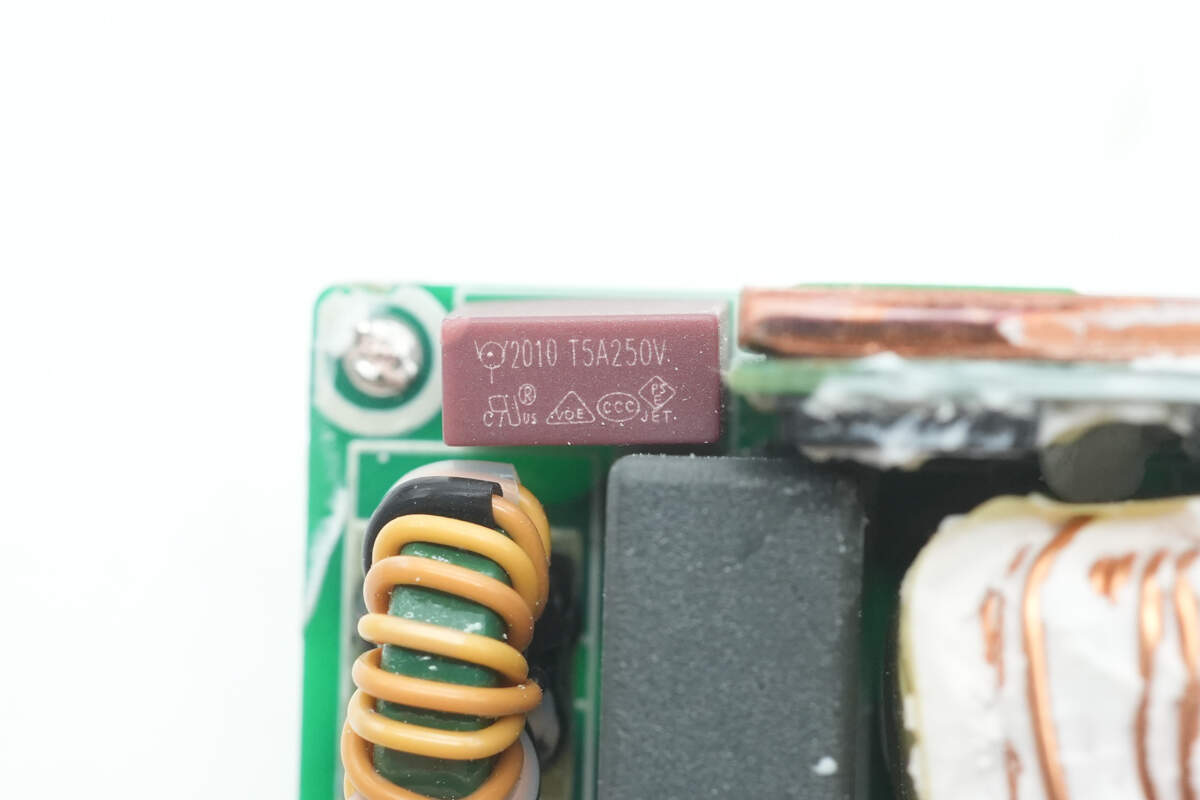
The time-delay fuse is from WalterFuse, rated at 5A 250V.
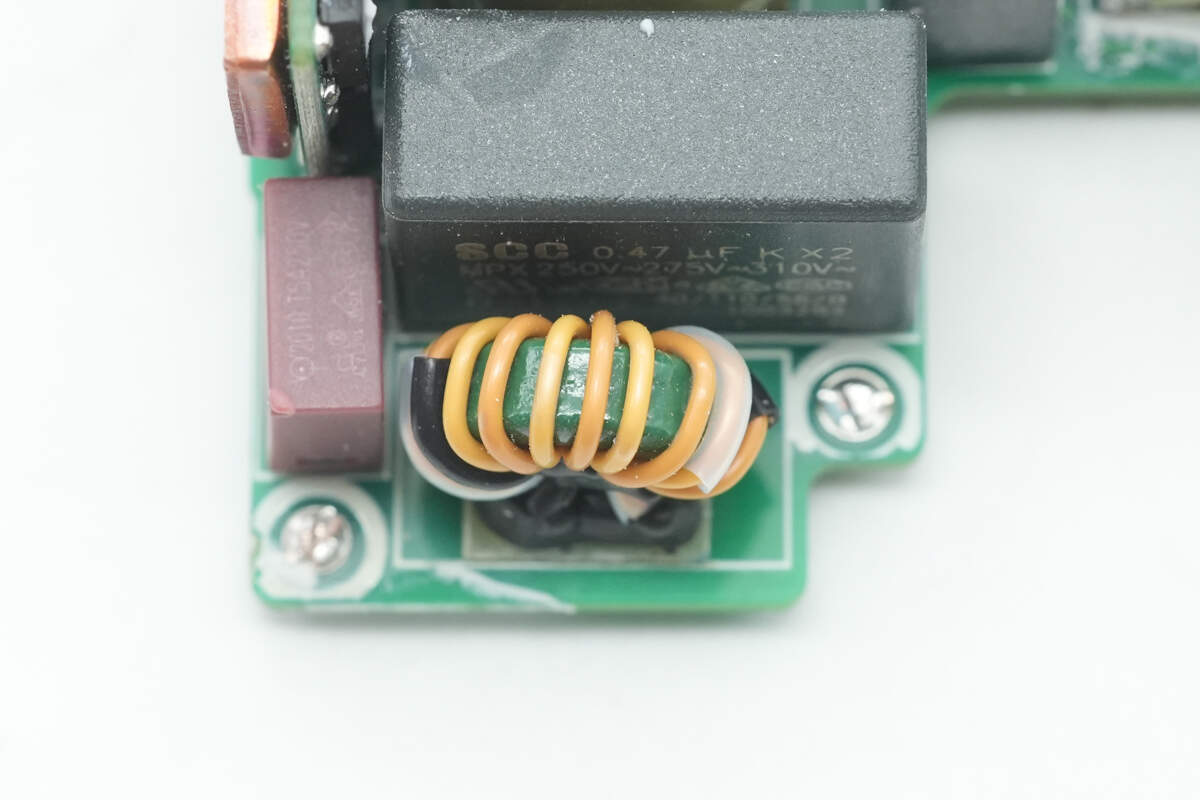
The common mode choke is used to filter out EMI interference.

The safety X2 capacitor is from SCC, with a specification of 0.47μF.

The secondary common mode choke is wrapped with insulating tape.
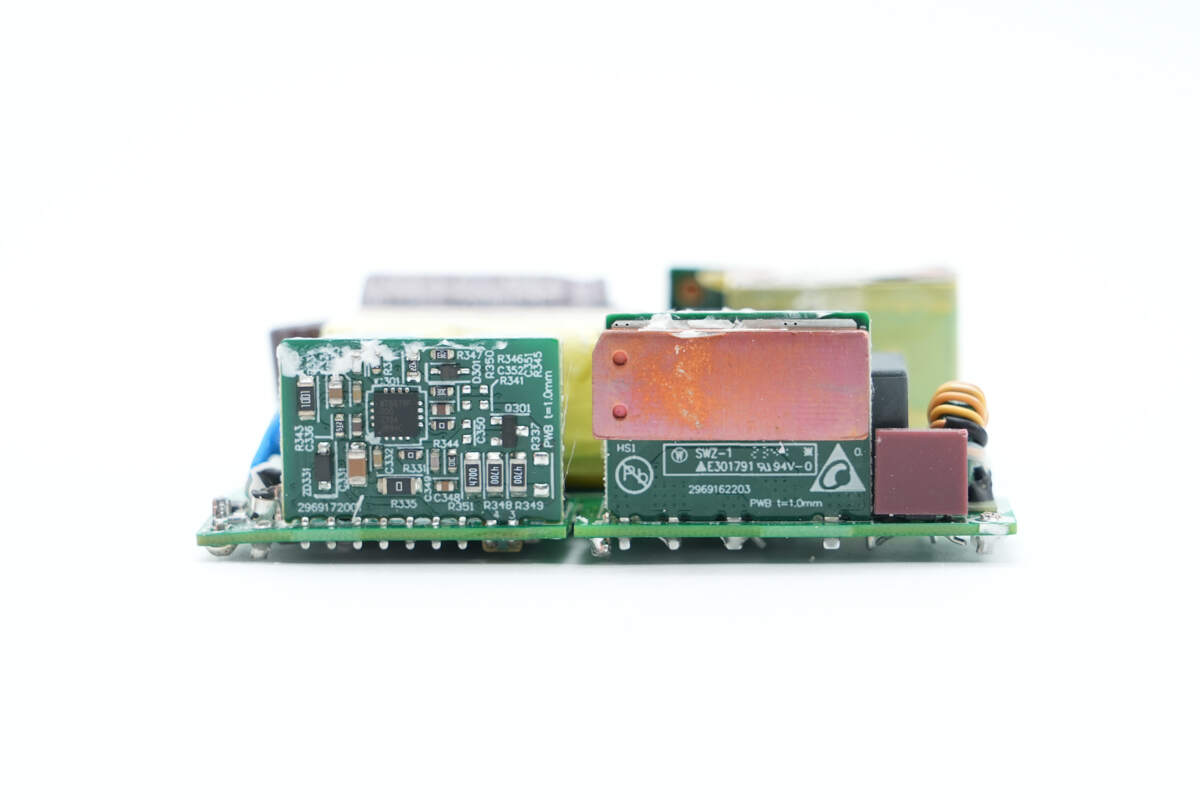
This side contains the rectifier PCB and the output protocol PCB, which are separated by a gap for isolation.
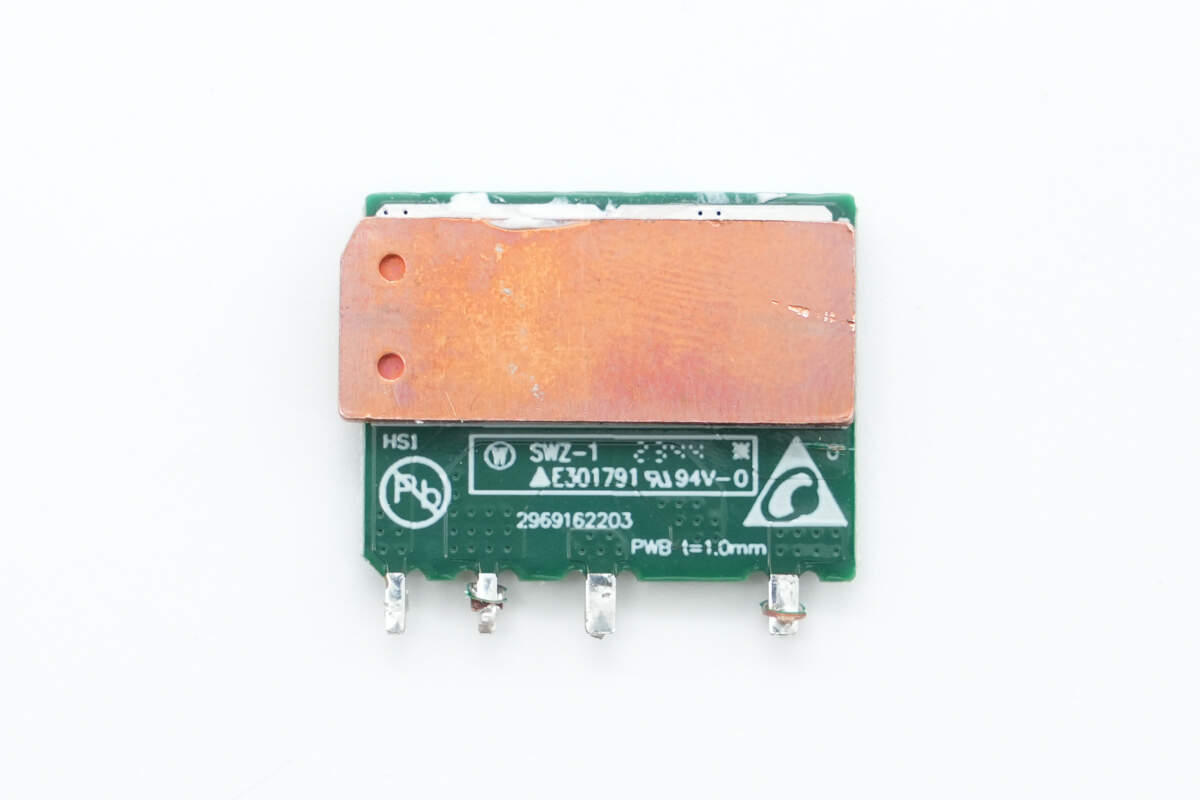
Remove the rectifier PCB. The back features a copper heatsink.
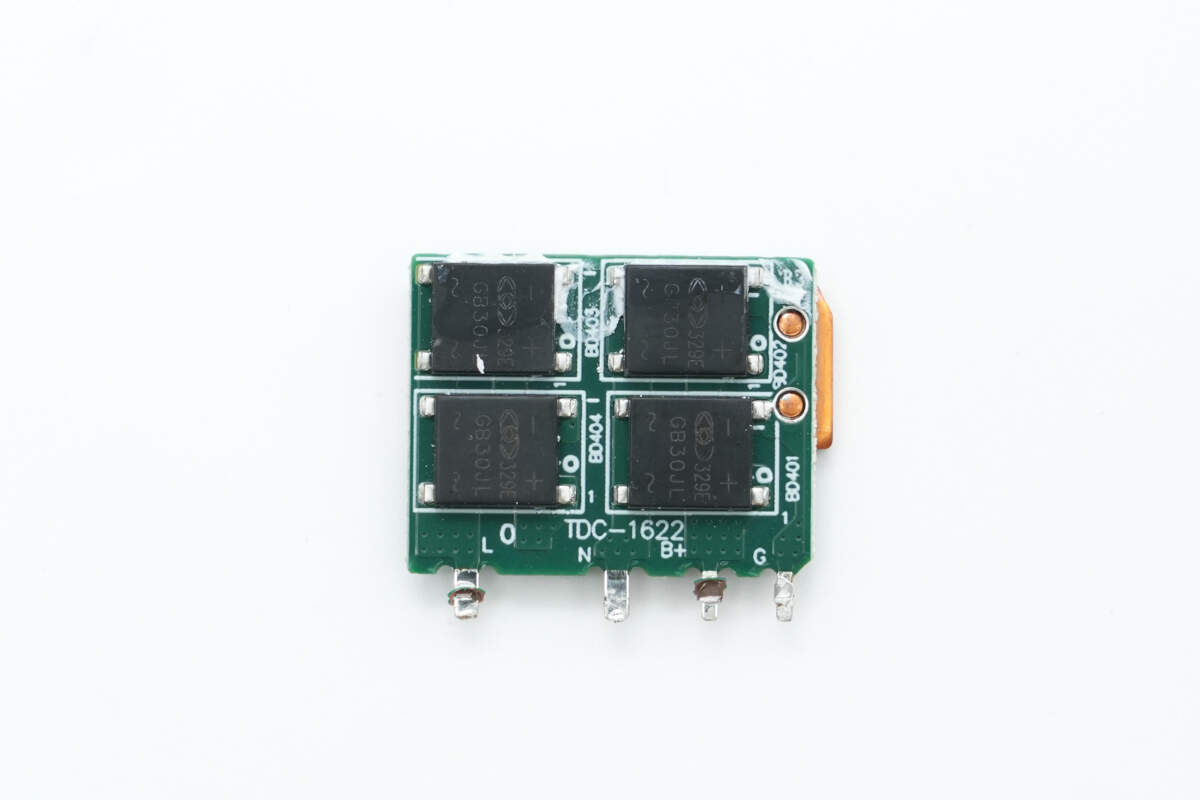
The front has four bridge rectifiers.
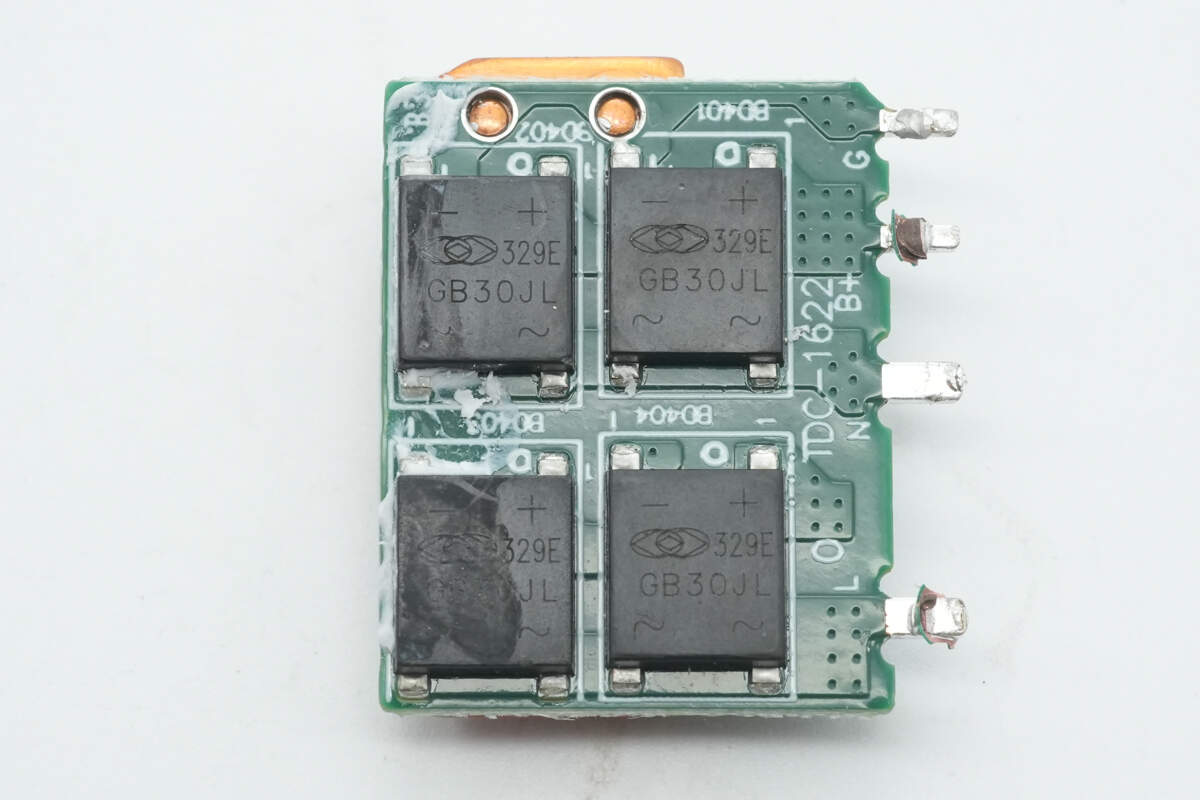
The four bridge rectifiers are from Gulf, all model GB30JL.

The filter inductor is wrapped with insulating tape.

The film capacitor is rated at 1μF, 450V.

The other film capacitor has the same specifications.

The other side of the PCB houses the PFC boost circuit PCB, which also features a copper heat sink on the back. On the right side is the high-voltage filter electrolytic capacitor.
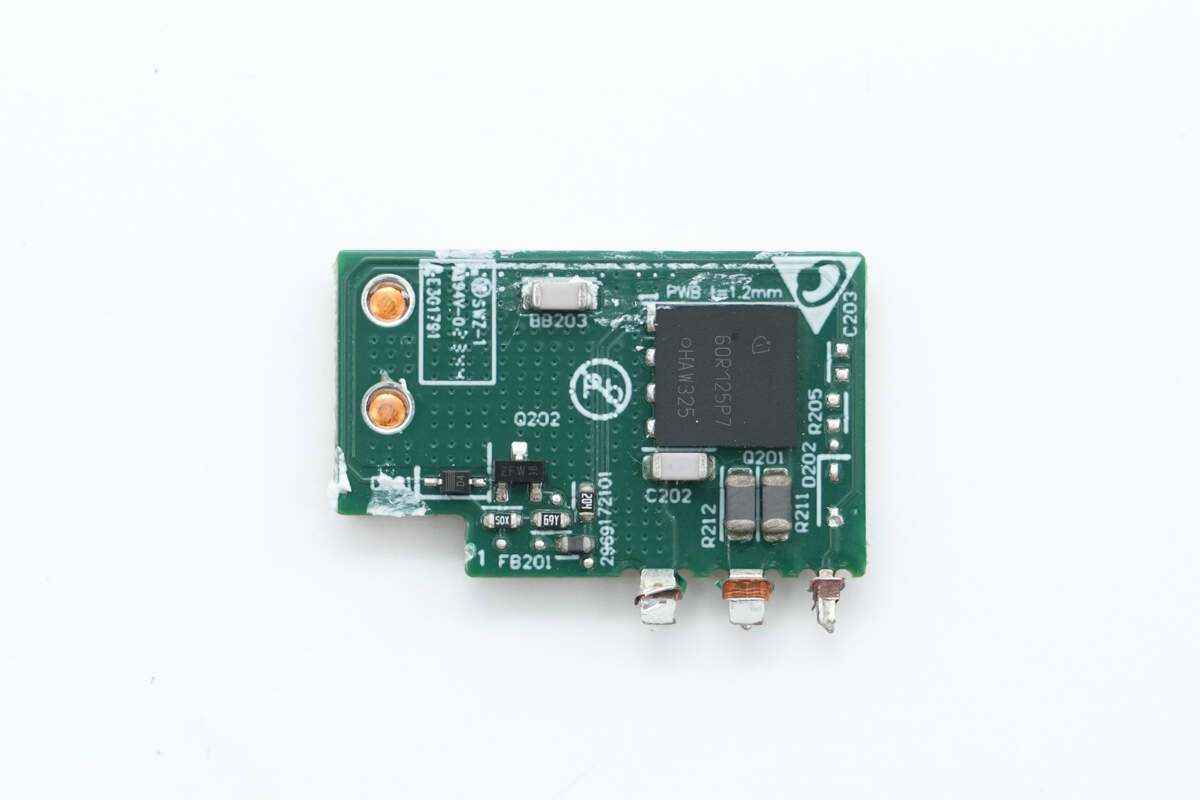
The front side of the small PCB is equipped with a PFC MOSFET.
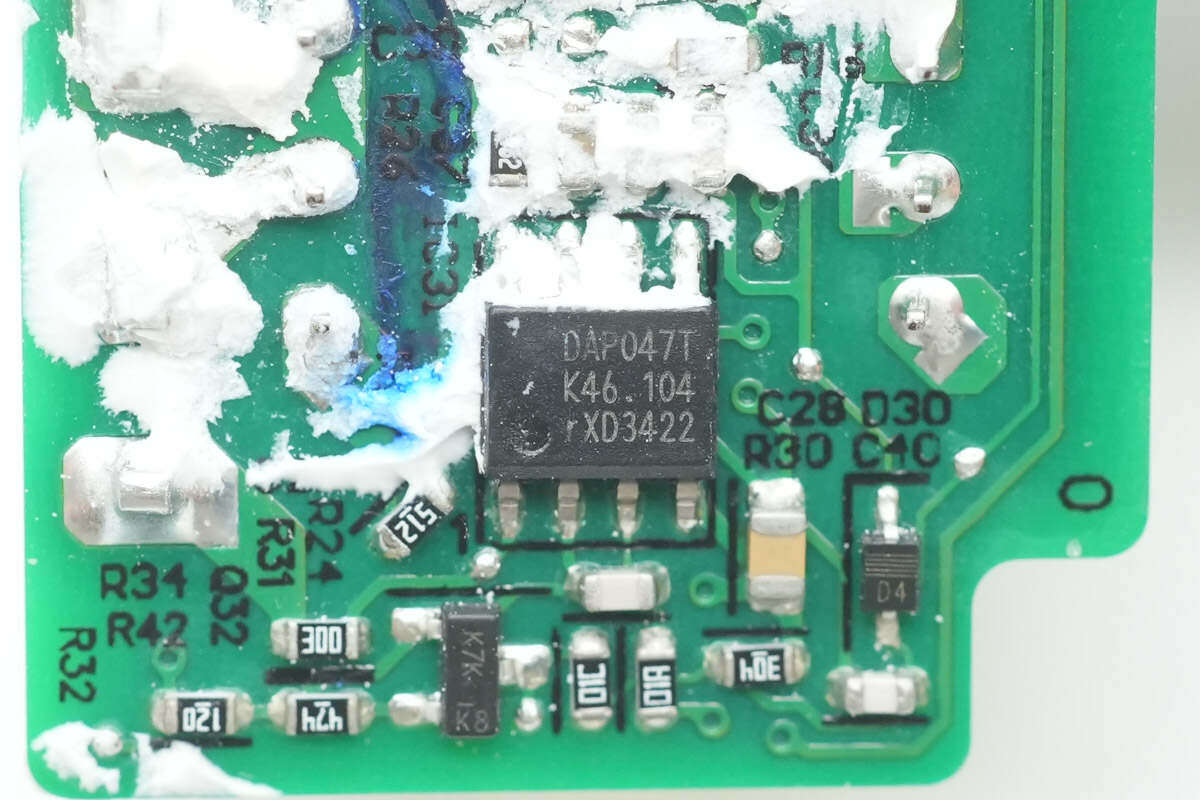
The PFC controller is marked with DAP047T, a custom model by Delta, housed in an SO8 package.
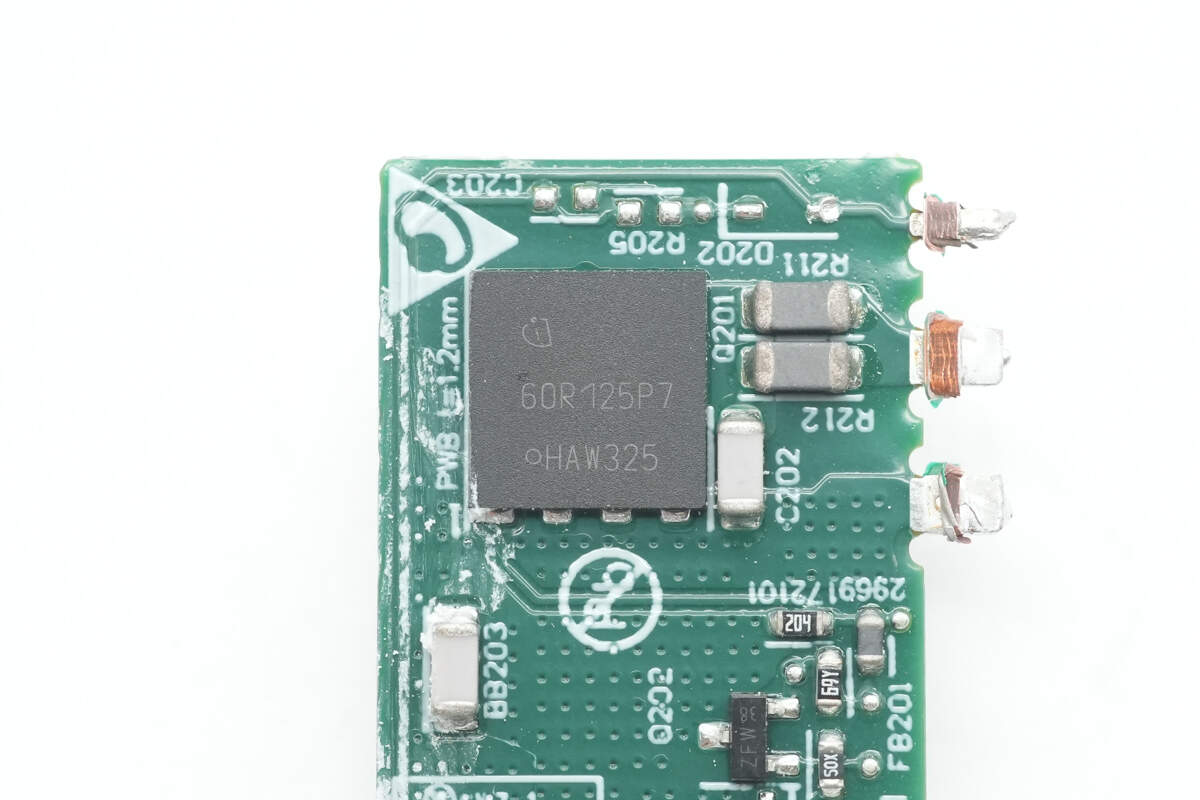
The PFC MOSFET is from Infineon, marked with 60R125P7, model IPL60R125P7. It belongs to the CoolMOS P7 series, rated for 650V, with an on-resistance of 125mΩ, and comes in a ThinPak 8×8 package.
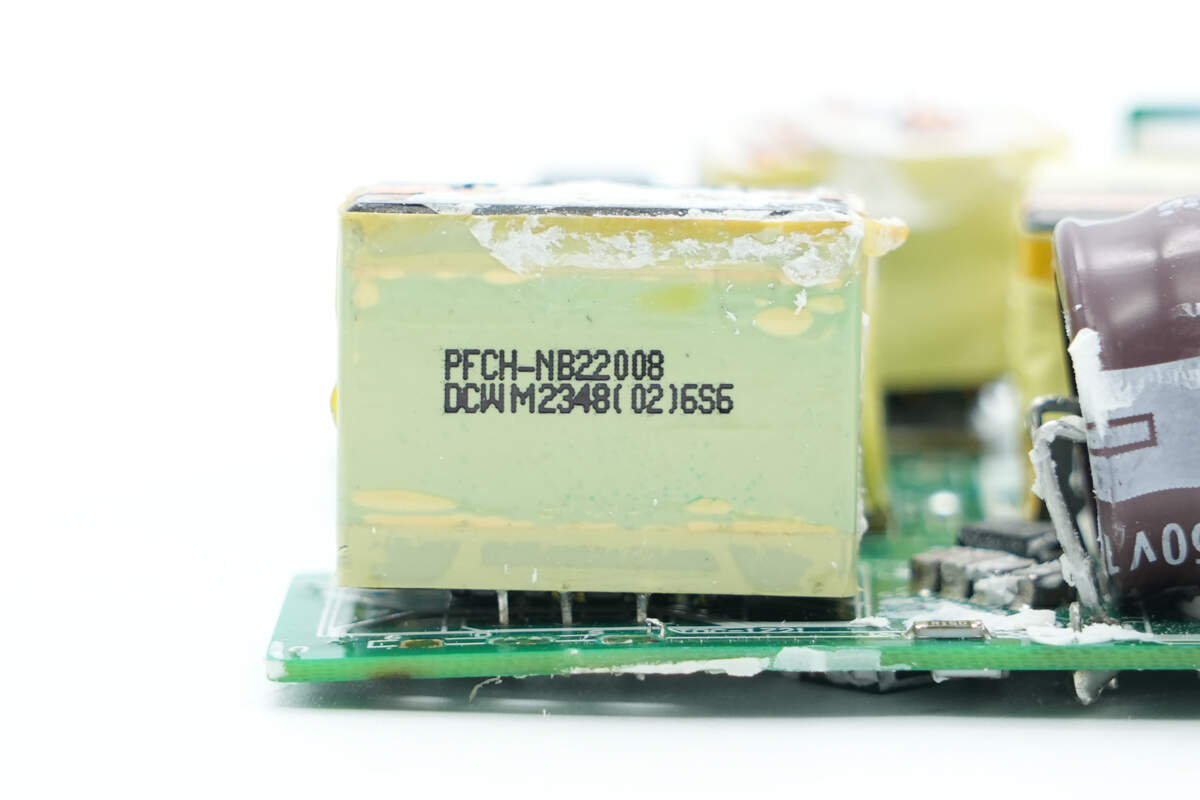
Close-up of the PFC boost inductor.
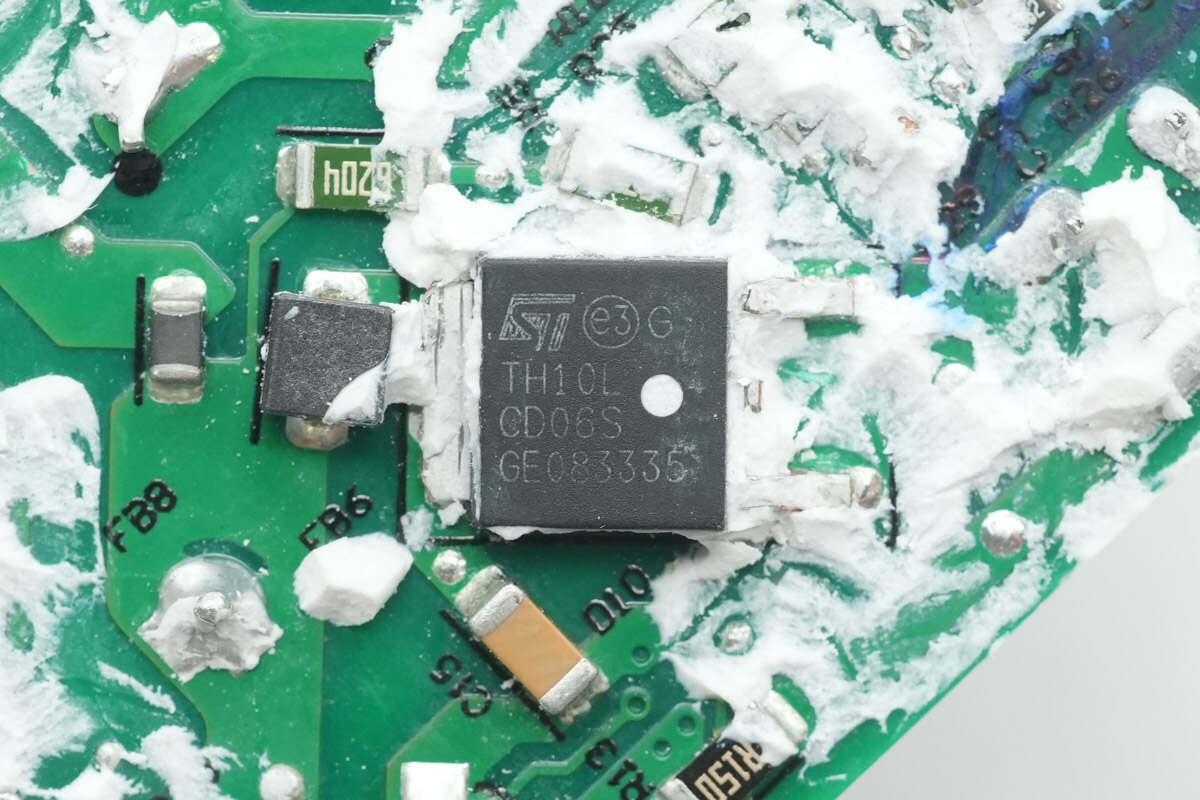
The PFC rectifier is from ST, model STTH10LCD06S. It is an ultrafast recovery diode rated at 10A 600V, housed in a DPAK package.
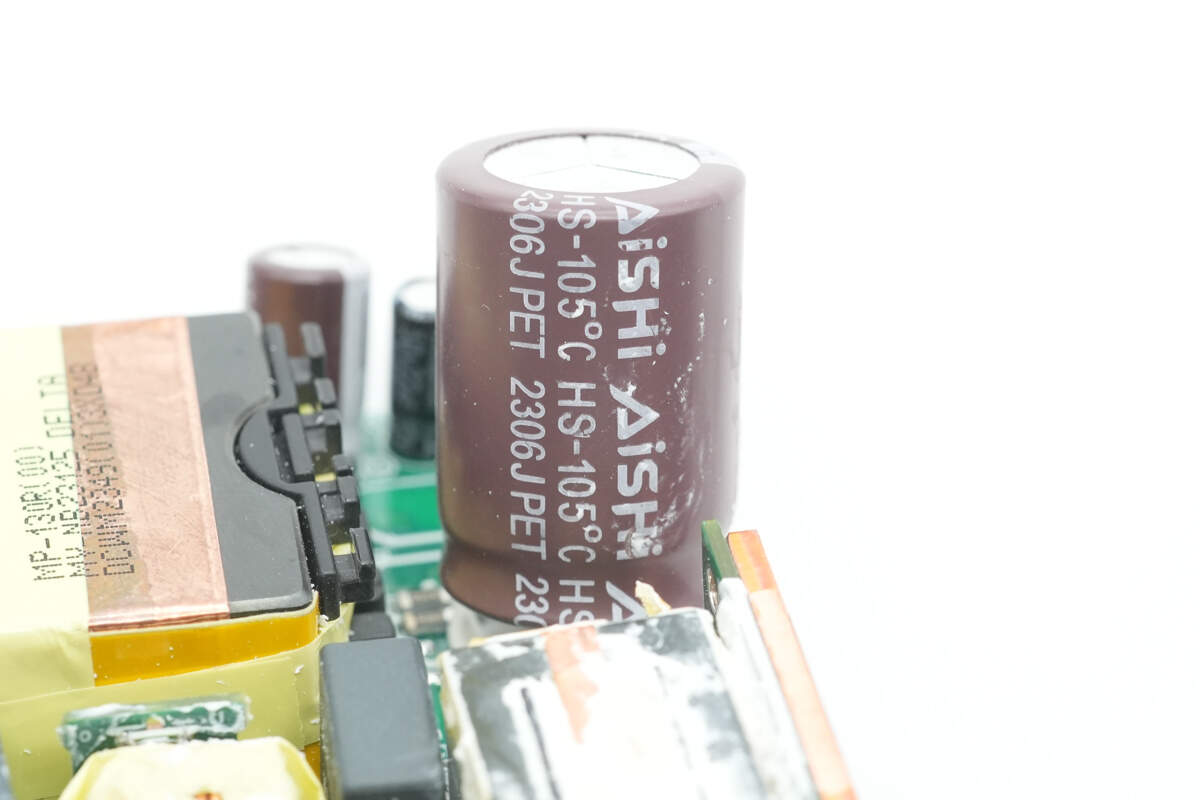
The high-voltage filter electrolytic capacitor is from AiSHi.
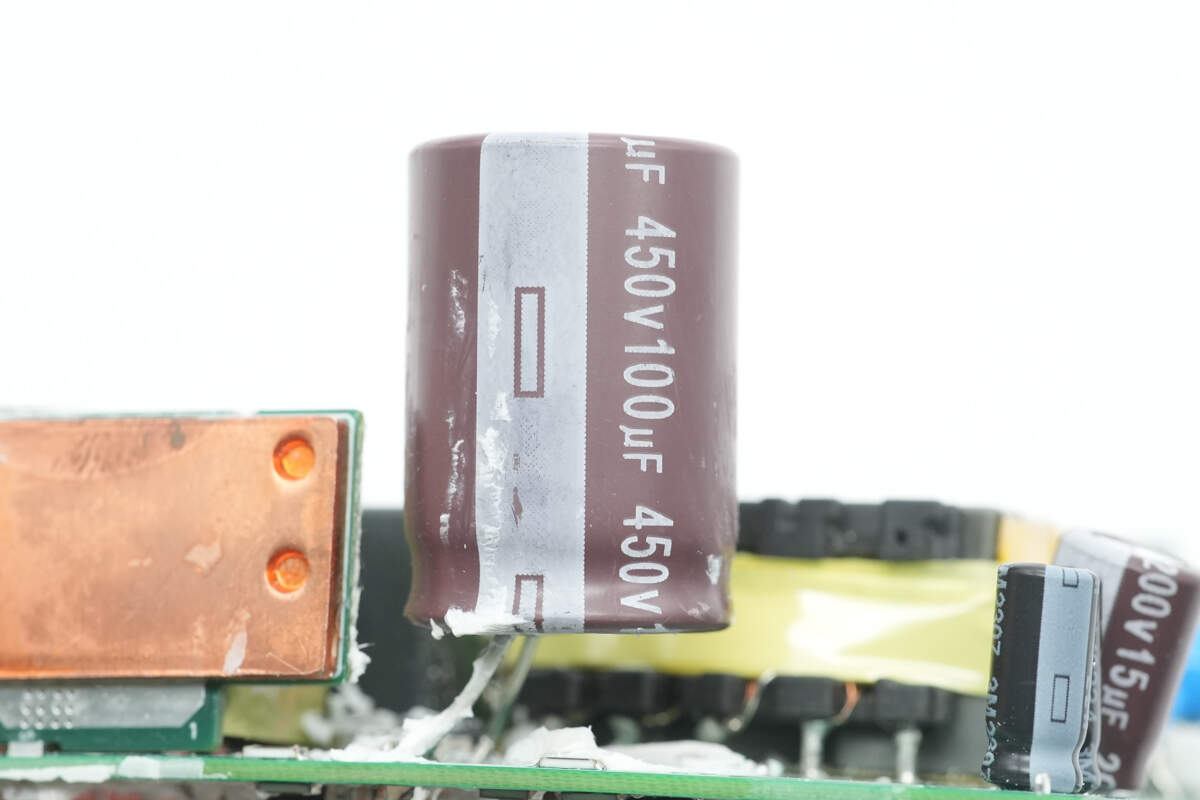
It is rated at 450V and 100μF.
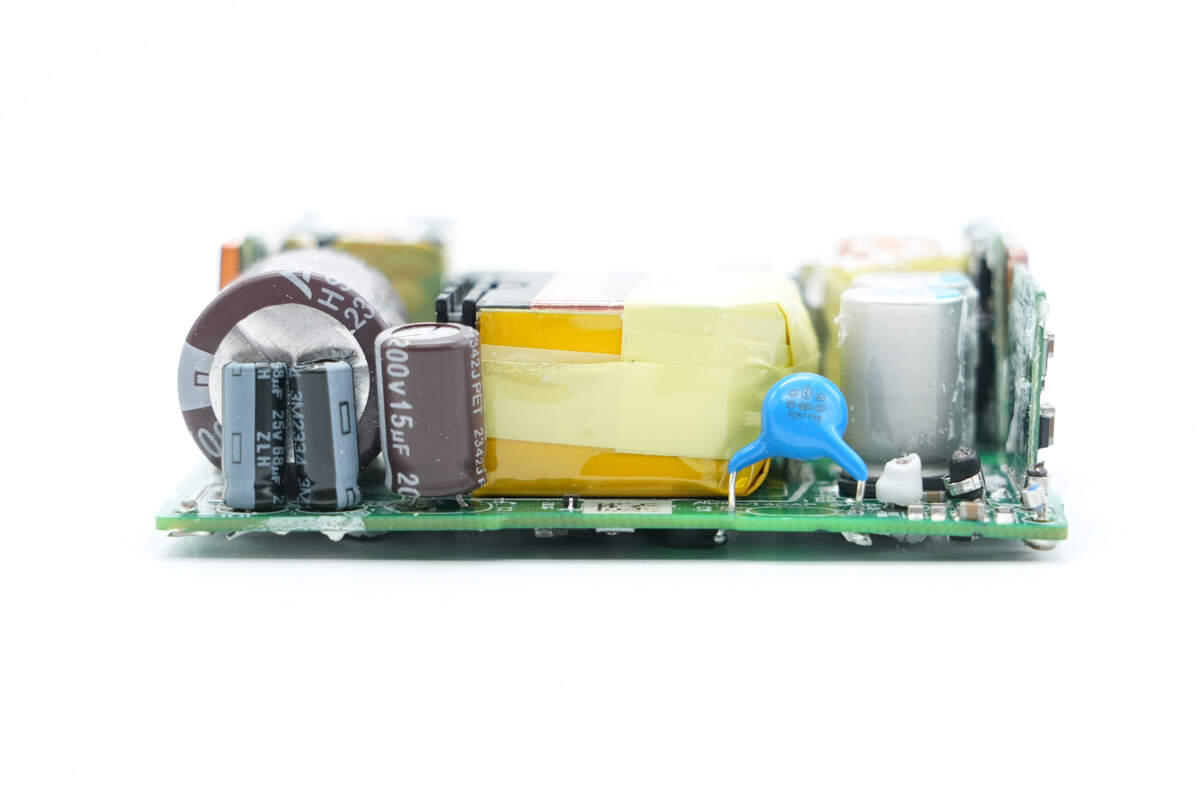
On the output side, the left contains capacitors that supply power to the master control chip, the center houses the transformer, and the right side includes the protocol PCB, a Y capacitor, and output filter solid-state capacitors.
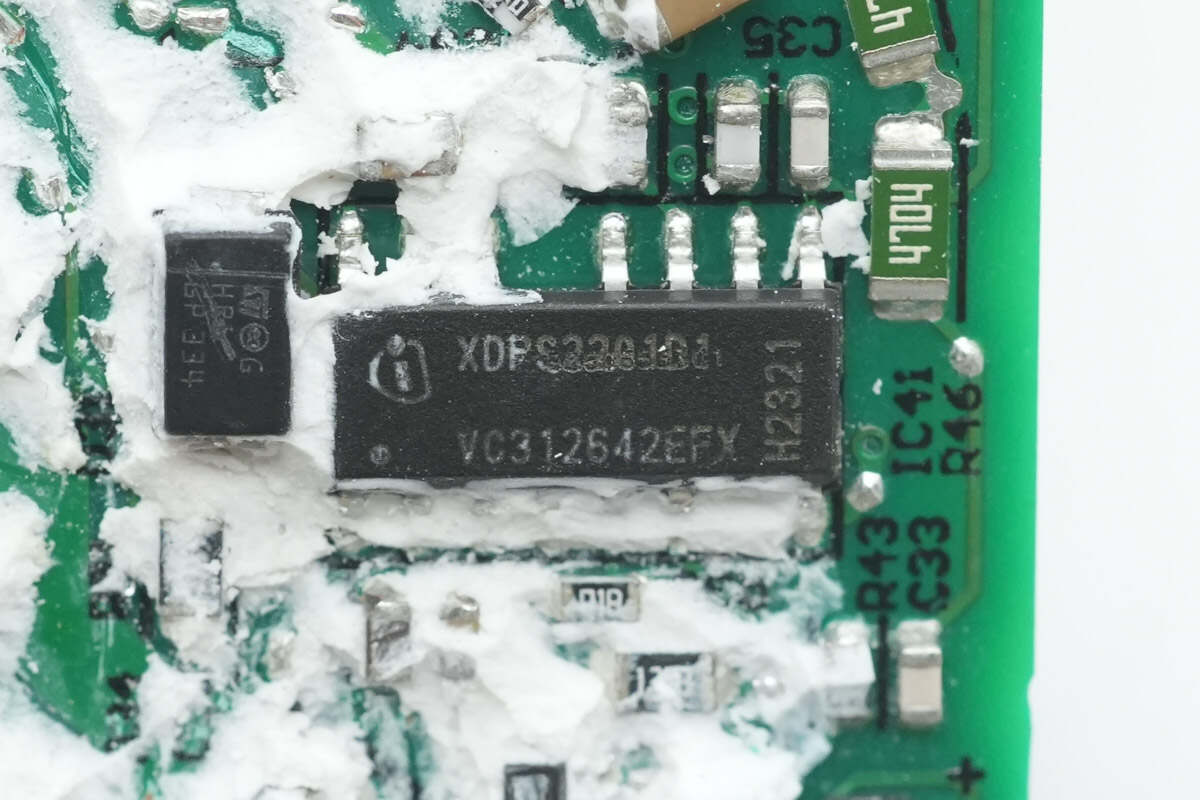
The master control chip is from Infineon, model XDPS2201. It is a digital hybrid flyback controller that integrates a 600V high-voltage startup circuit and high- and low-side MOSFET drivers. It uses peak current mode control for fast load response and automatically switches to burst mode operation based on output current levels. The chip supports primary-side overvoltage protection, features standby power consumption below 75mW, and allows parameter configuration via a single-pin UART interface. It comes in a DSO-14 package with a simplified external component design.
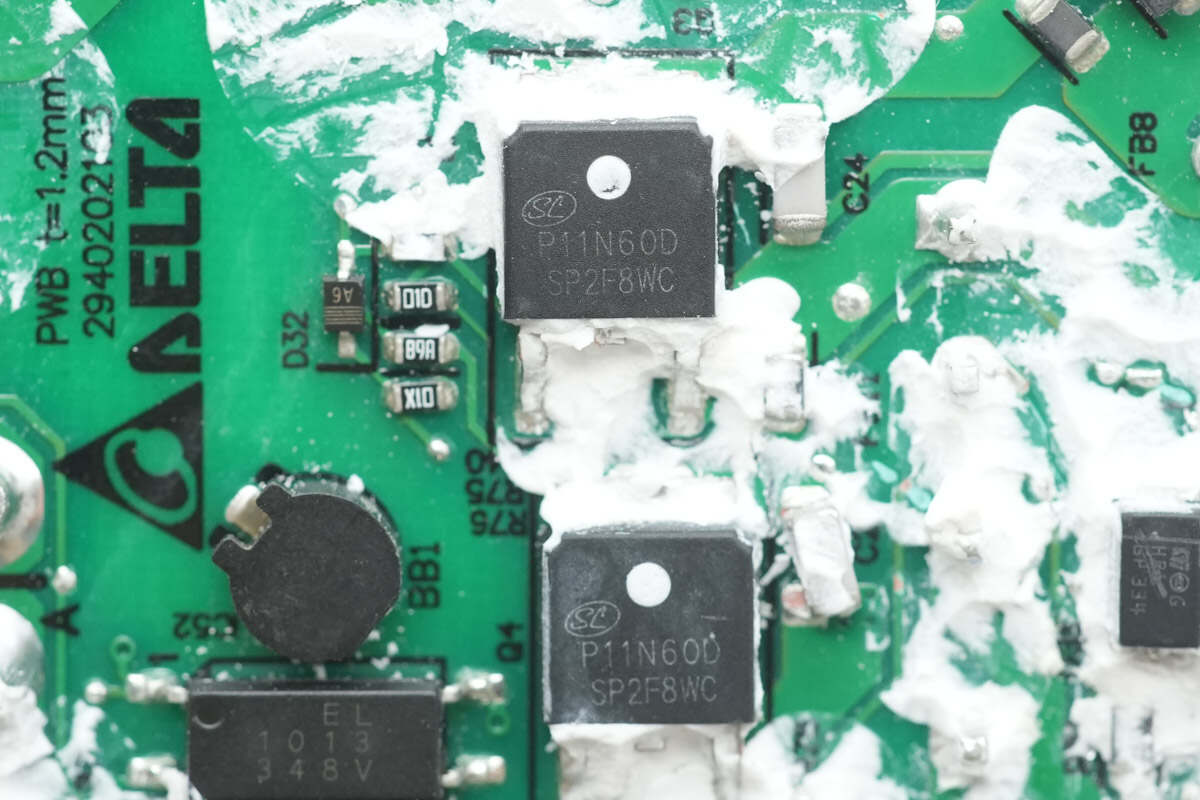
The HFB half-bridge MOSFETs are from Silan, model SVSP11N60DD2TR. It is an NMOS device rated at 600V with an on-resistance of 300mΩ, packaged in TO-252.
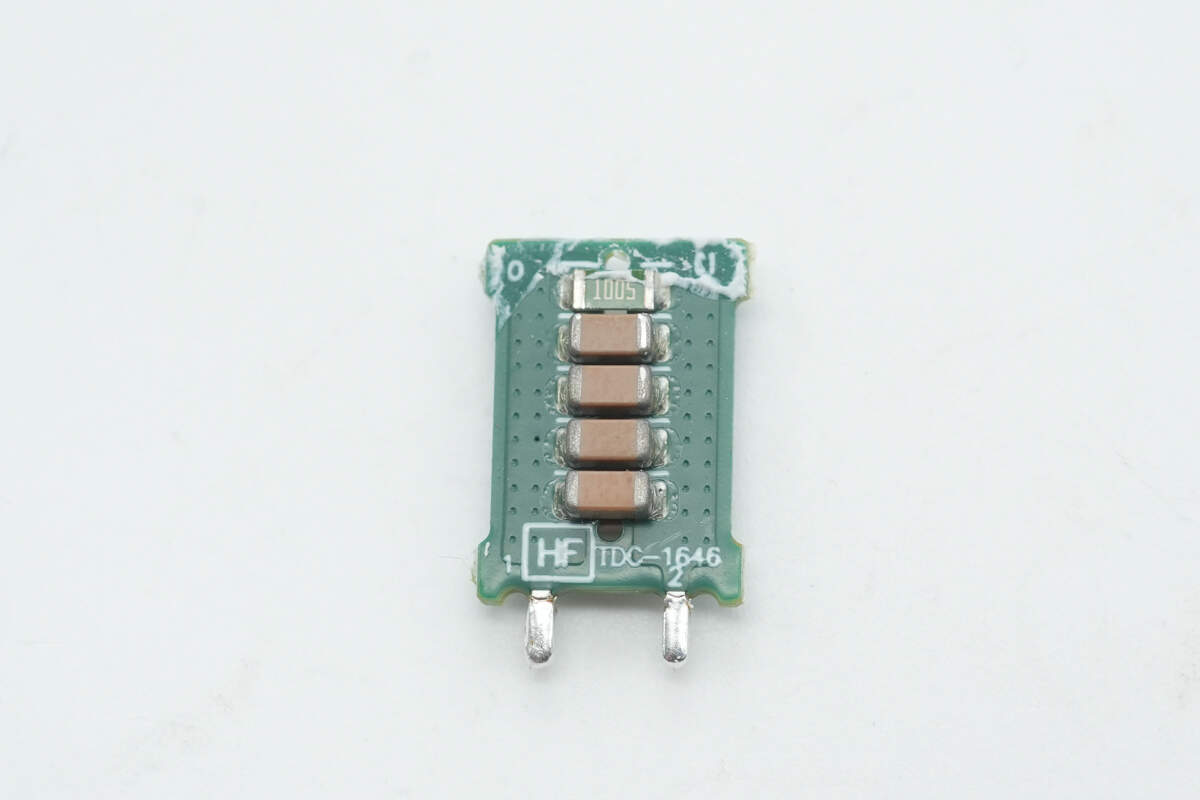
The resonant capacitors are soldered onto a separate PCB.
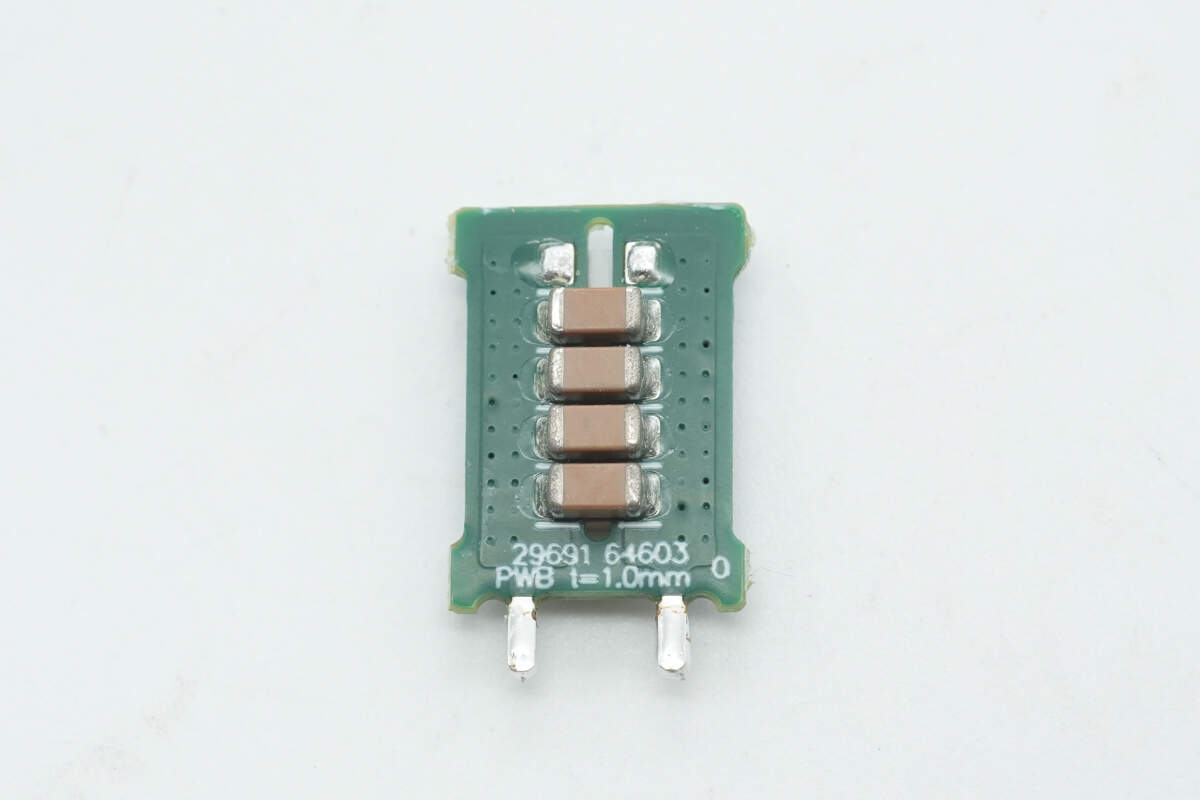
There are also four resonant capacitors connected in parallel on the back.
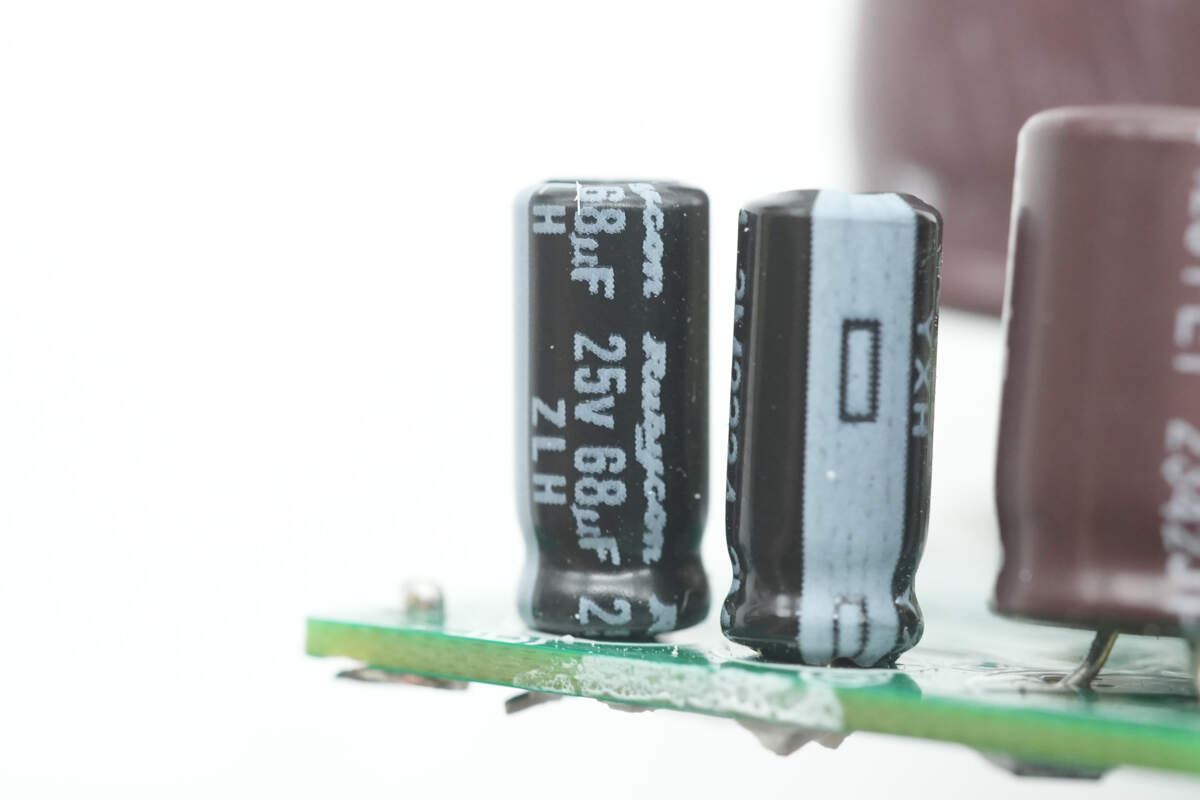
One of the capacitors supplying power to the master control chip is from Rubycon, rated at 25V 68μF.
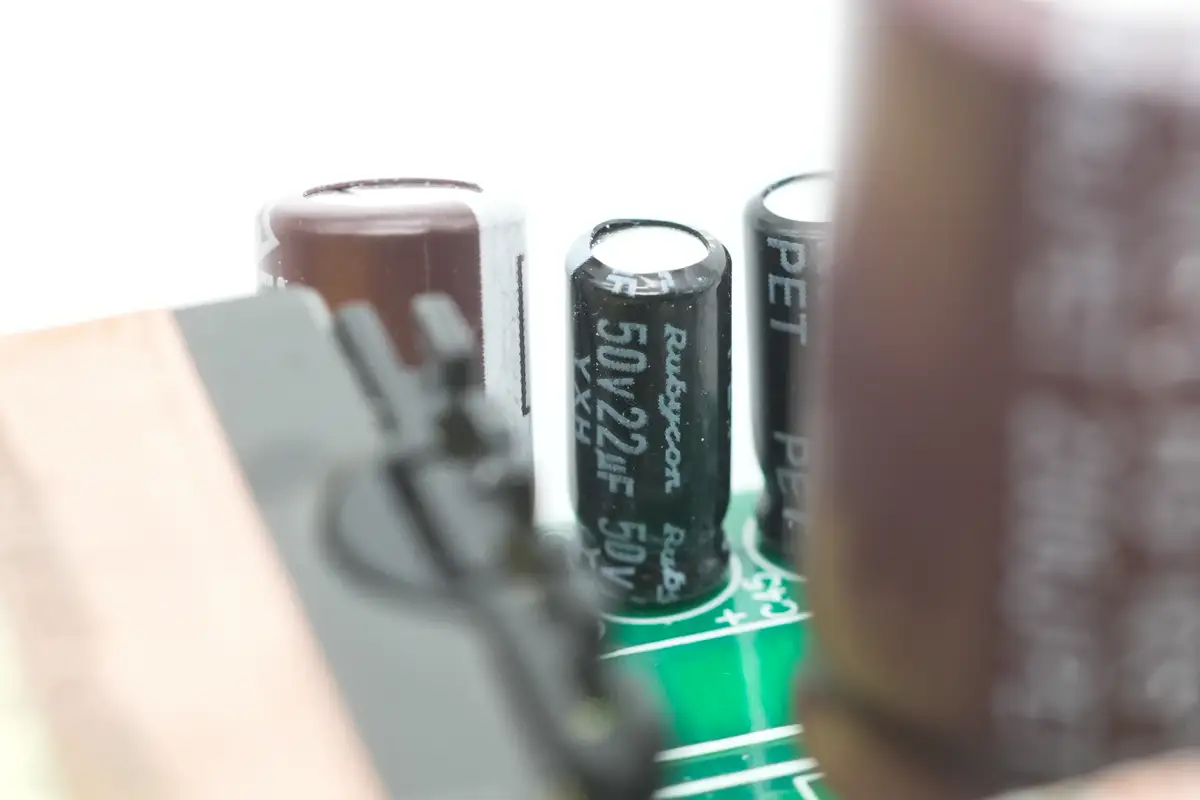
The other capacitor is also from Rubycon, rated at 50V 22μF.
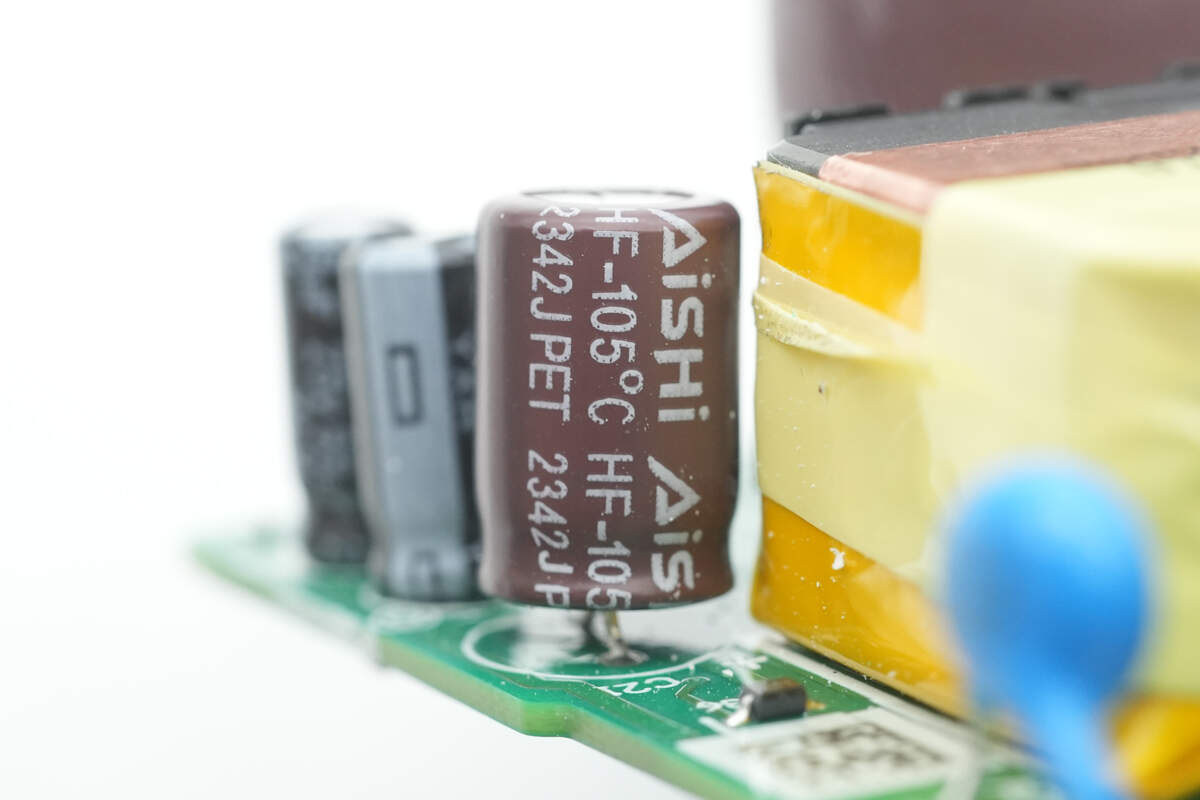
There is also a capacitor from AiSHi.

It is rated at 200V 15μF.
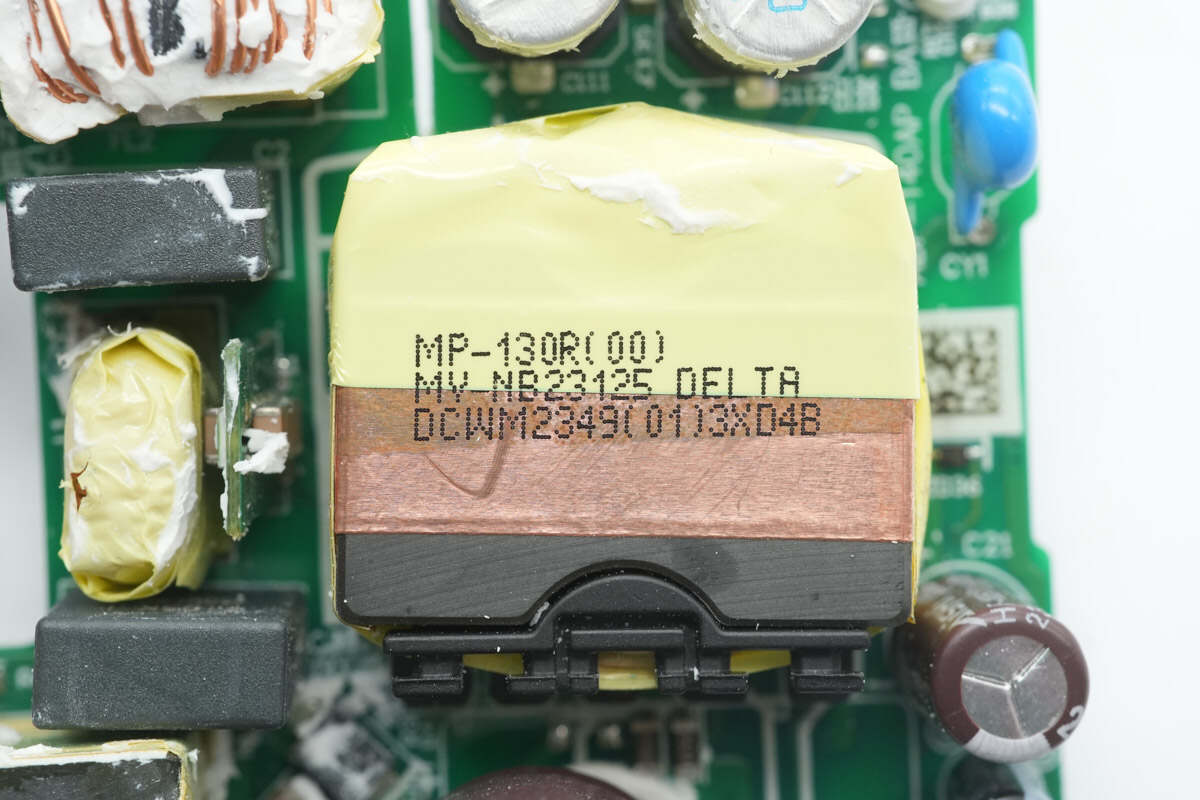
Close-up of the transformer.
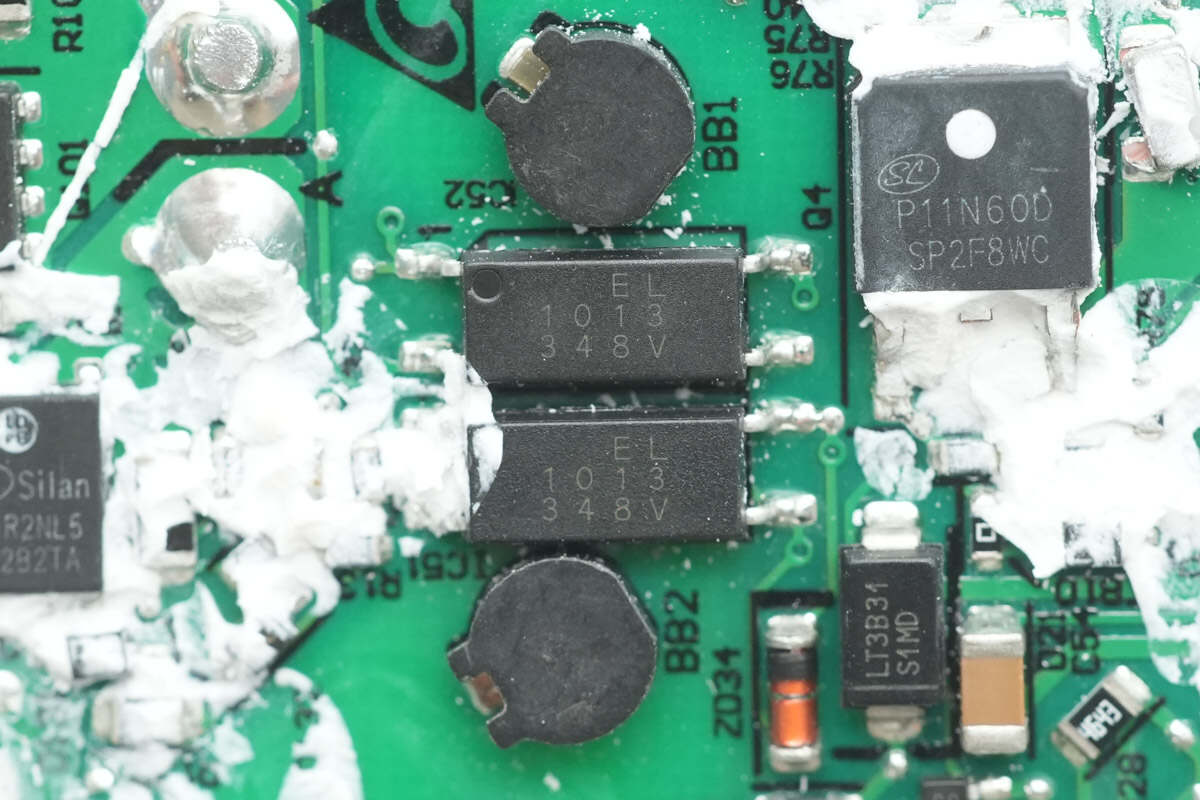
Two Everlight EL1013 optocouplers are used for output voltage feedback and protection.
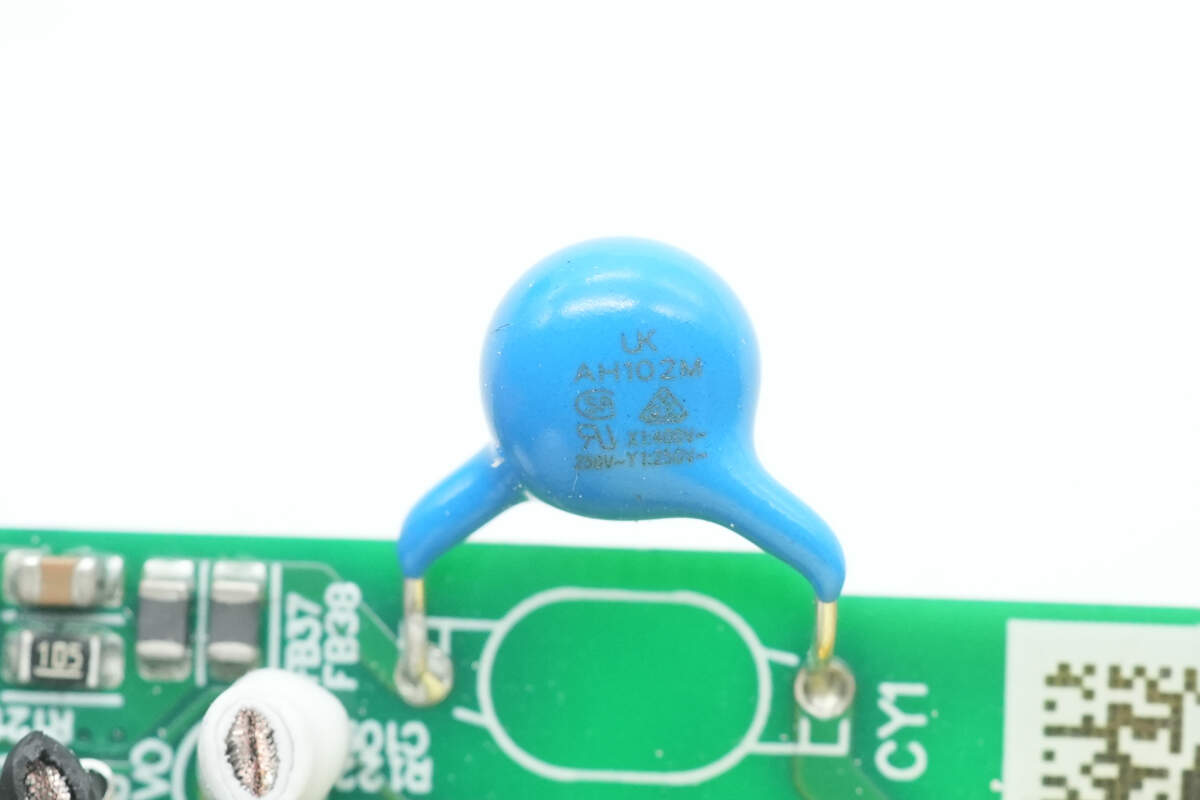
Close-up of the blue Y capacitor.
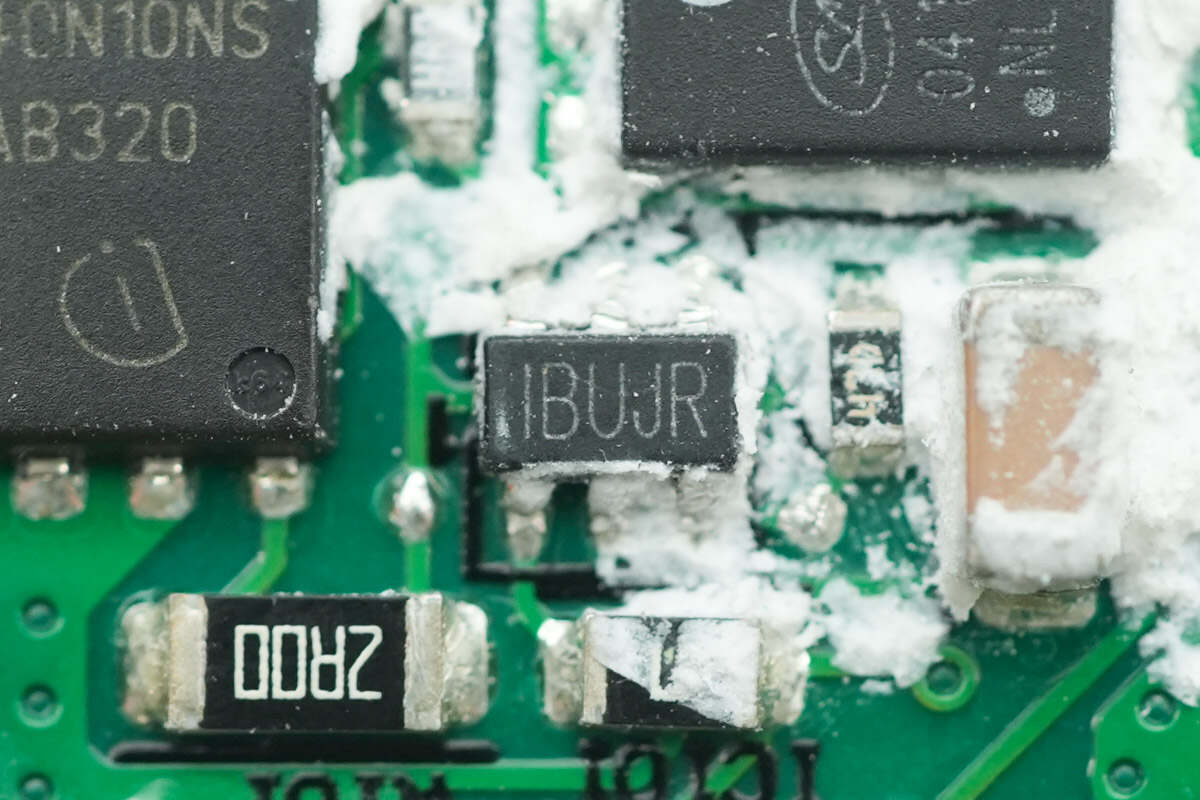
The synchronous rectifier controller is from MPS, marked with IBUJR, model MP6951. It supports DCM, CCM, QR, and ZVS operating modes, as well as ACF active clamp flyback and HFB hybrid flyback. The controller can operate at frequencies up to 1MHz and is capable of driving GaN synchronous rectifiers. It supports both high-side and low-side applications and comes in a TSOT23-6 package.

The synchronous rectifier is from Infineon, model BSC040N10NS5. It is an NMOS device rated at 100V with an on-resistance of 4mΩ, packaged in PG-TDSON-8.
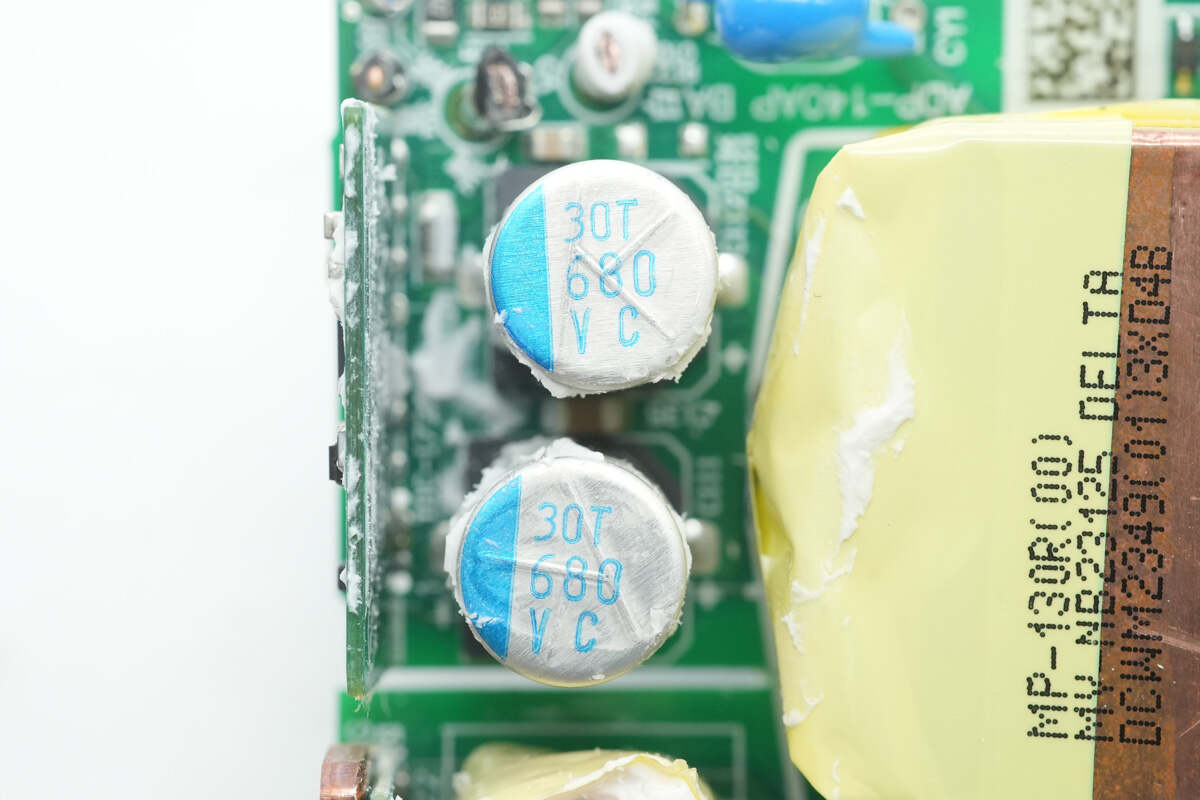
The two output filter solid capacitors are from SunCon, both rated at 680μF 35V.

The protocol chip is from Weltrend, model WT6676F. It supports USB PD 3.1 and up to 36V output voltage, featuring programmable constant voltage and constant current control. Internally, it integrates a low-side current sense amplifier and supports cable loss compensation. The WT6676F includes programmable protection functions such as overvoltage, undervoltage, overcurrent, and overtemperature protection.
It has a built-in 10-bit ADC for voltage and current detection, an integrated NMOS load switch driver, output discharge transistor, and power supply regulator. The chip supports PFC control and energy-saving modes, with an input voltage rating up to 45V. It comes in a QFN-16 package. A thermistor is soldered next to the chip for internal temperature monitoring and overtemperature protection.
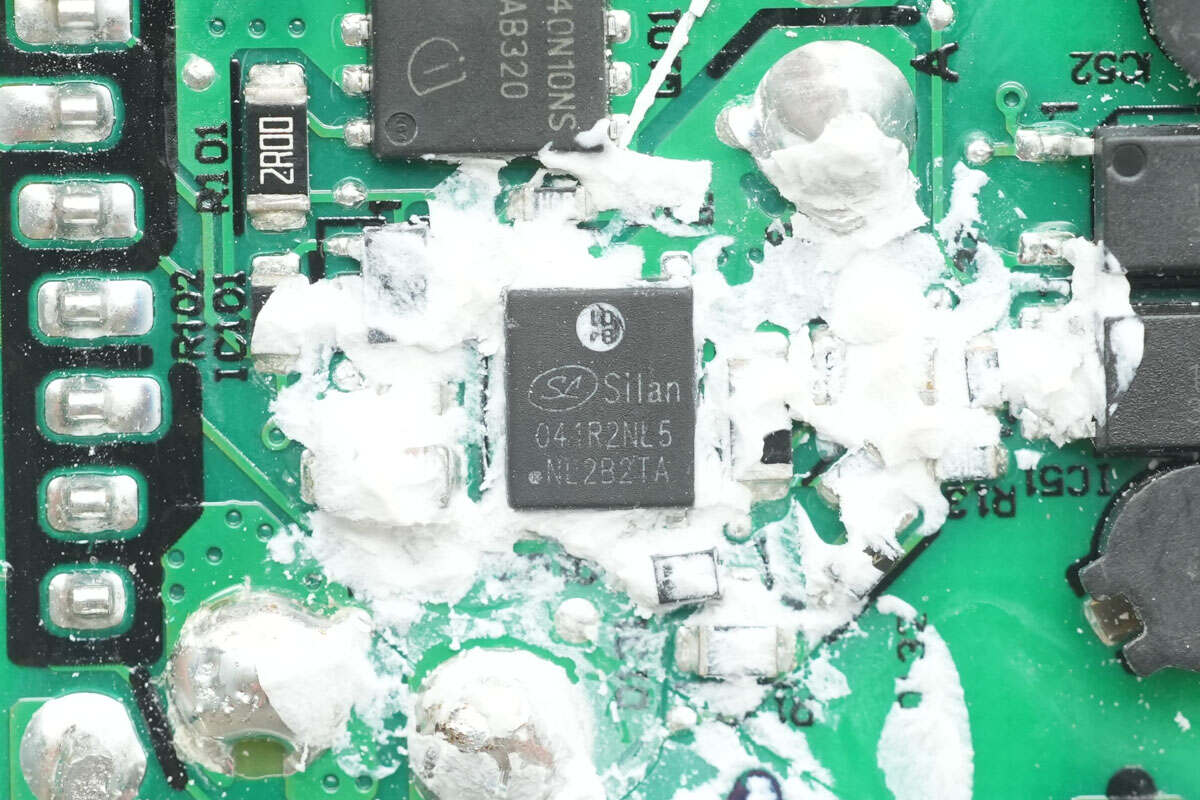
The VBUS MOSFET is from Silan, model SVG041R2NL5. It is an NMOS device rated at 40V with an on-resistance of 1mΩ, packaged in PDFN-8 (5×6 mm).
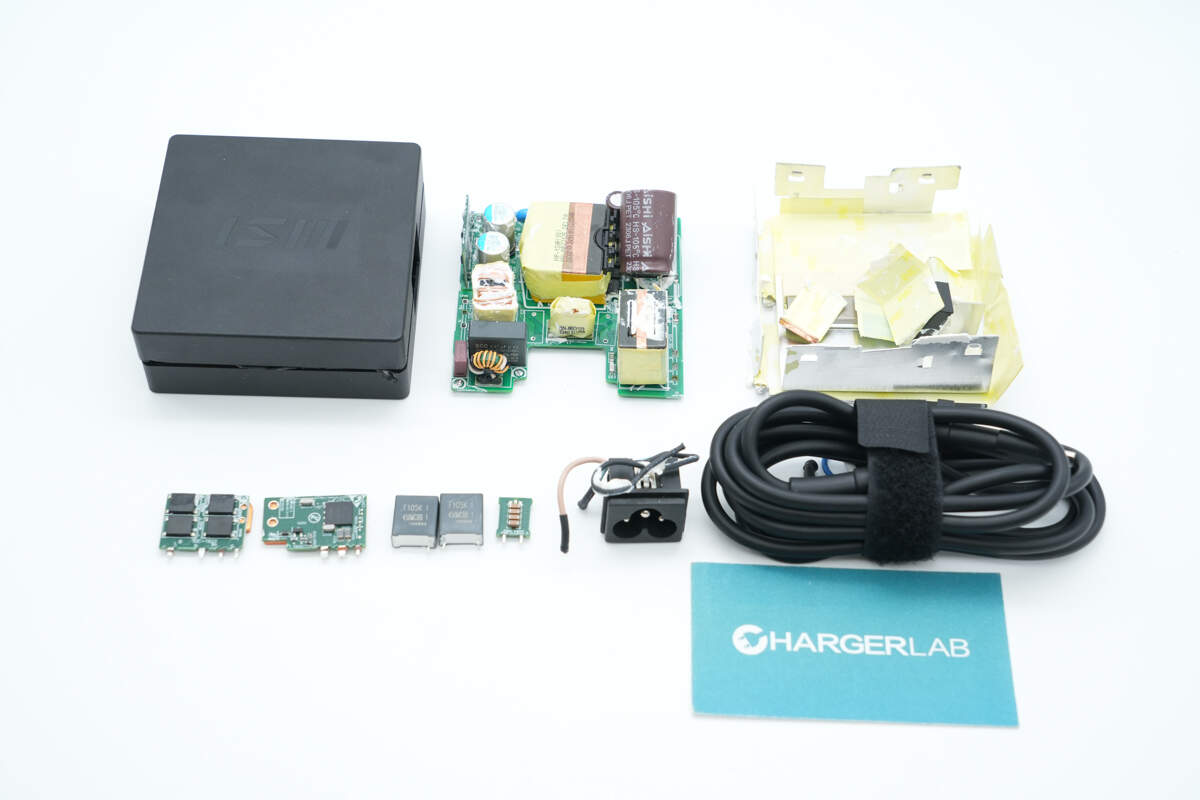
Well, those are all components of the MSI 140W USB-C Power Adapter.
Summary of ChargerLAB

Here is the component list of the MSI 140W USB-C Power Adapter for your convenience.
It comes with a 1.6-meter USB-C output cable and features a detachable power cord design, allowing users to replace the power cord with different lengths according to usage scenarios. It supports a wide input voltage range of 100-240VAC and delivers up to 28V/5A output, with a maximum power of 140W to meet laptop charging requirements.
After taking it apart, we found that it is manufactured by Delta Electronics. The PFC controller is a custom model from Delta, while the HFB half-bridge controller is the Infineon XDPS2201. Both the PFC MOSFET and synchronous rectifier are sourced from Infineon. The HFB half-bridge MOSFETs and VBUS MOSFET are supplied by Silan. Capacitors come from AiSHi and SunCon. The PCBA module incorporates multiple small PCBs with copper heat sinks for thermal management. Components are reinforced with adhesive, demonstrating solid and reliable build quality and materials.
Related Articles:
1. Teardown of MECHREVO 140W USB-C GaN Power Adapter (AY140AA-1C-CH)
2. Teardown of Meituan 7000mAh 22.5W Shared Power Bank (MT-D-7BDY0)
3. Teardown of GreatWall 550W 80 PLUS Platinum SiC Server Power Supply (GW-CRPS550)

